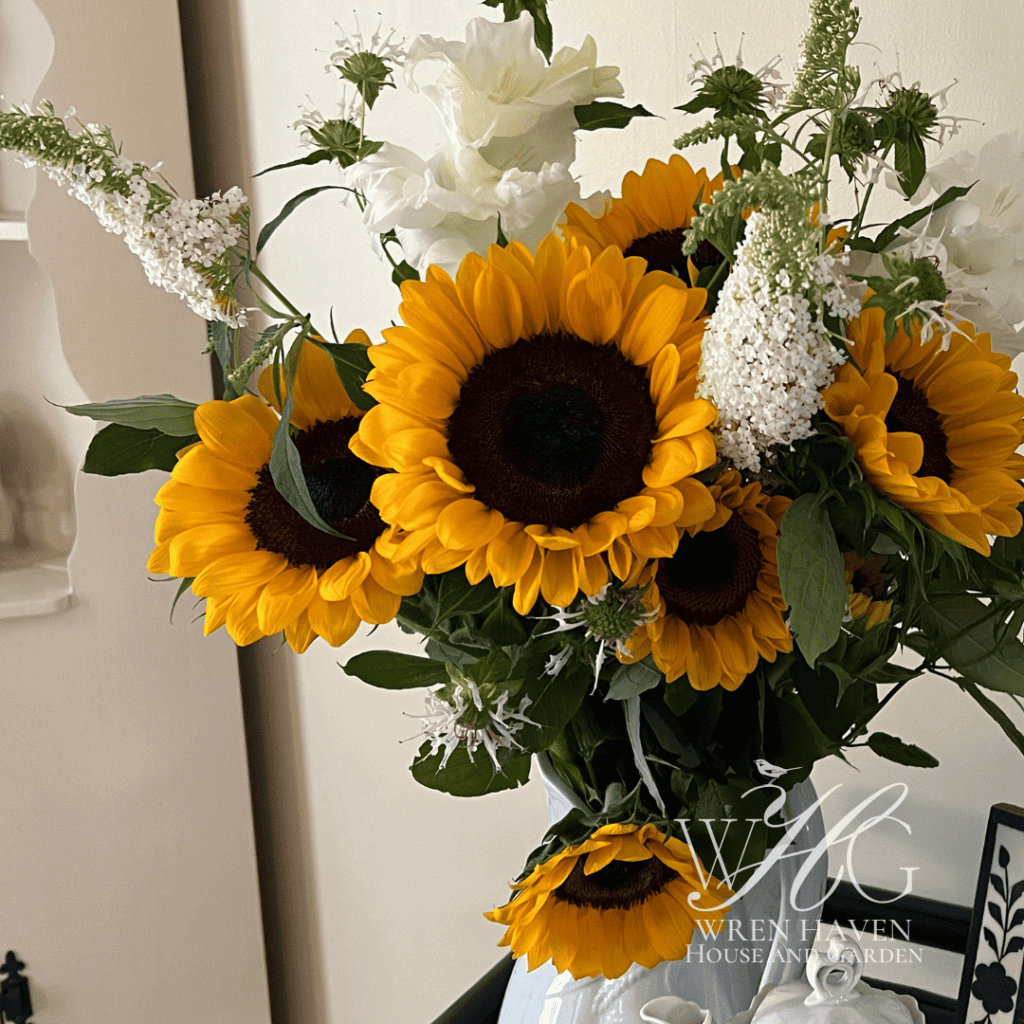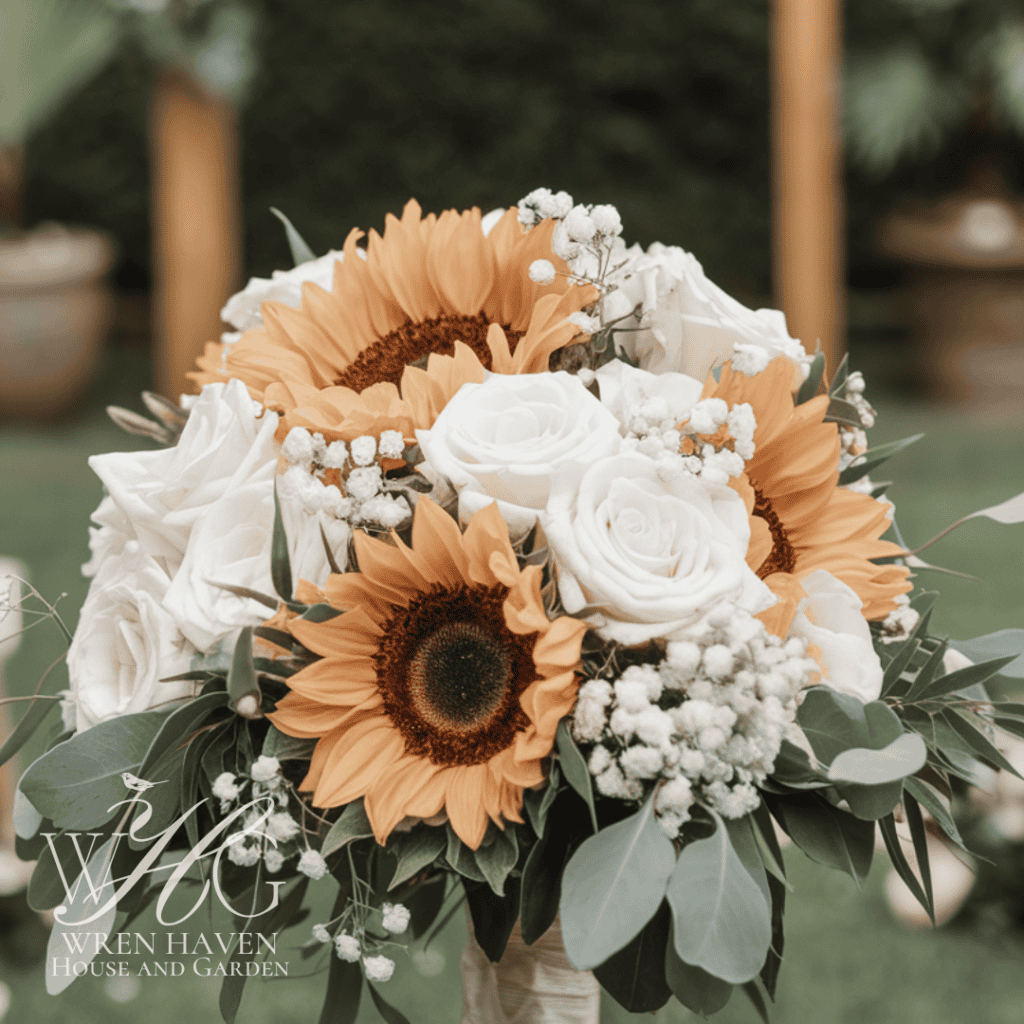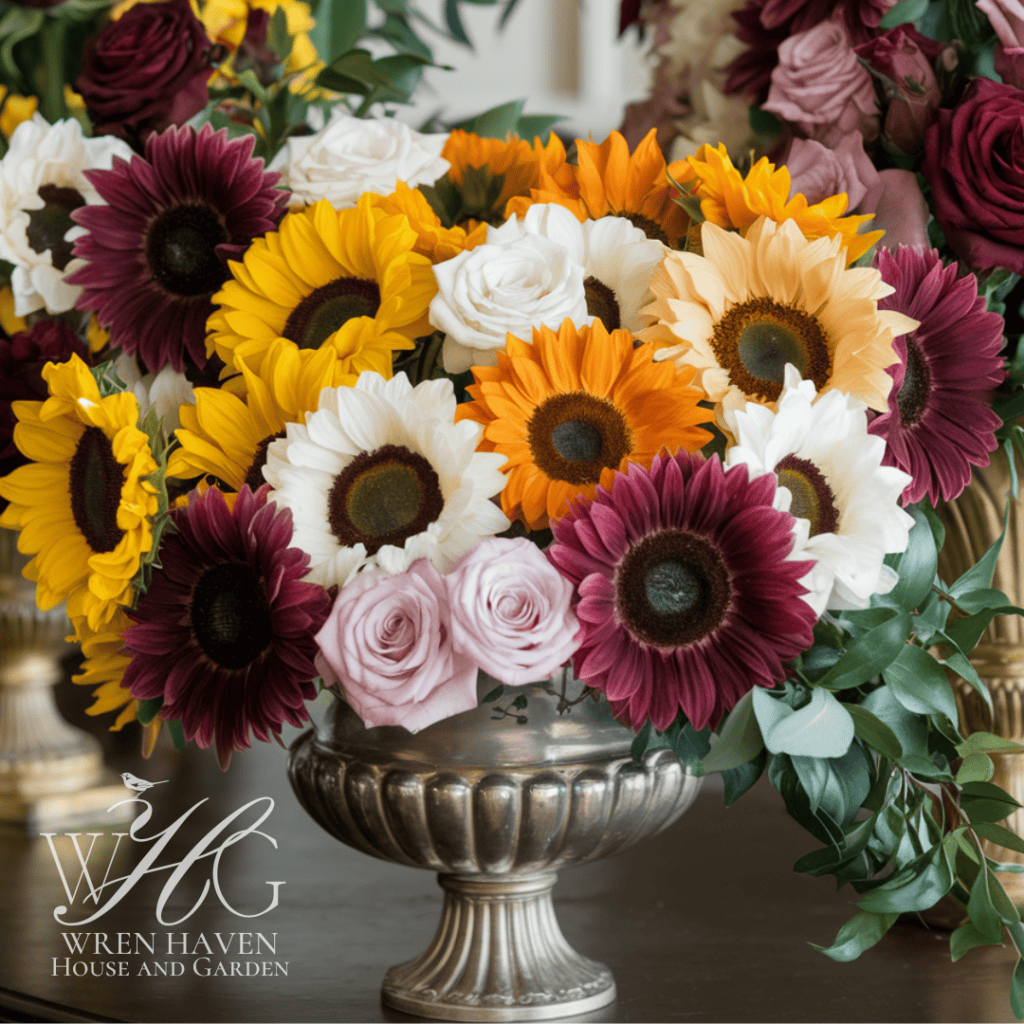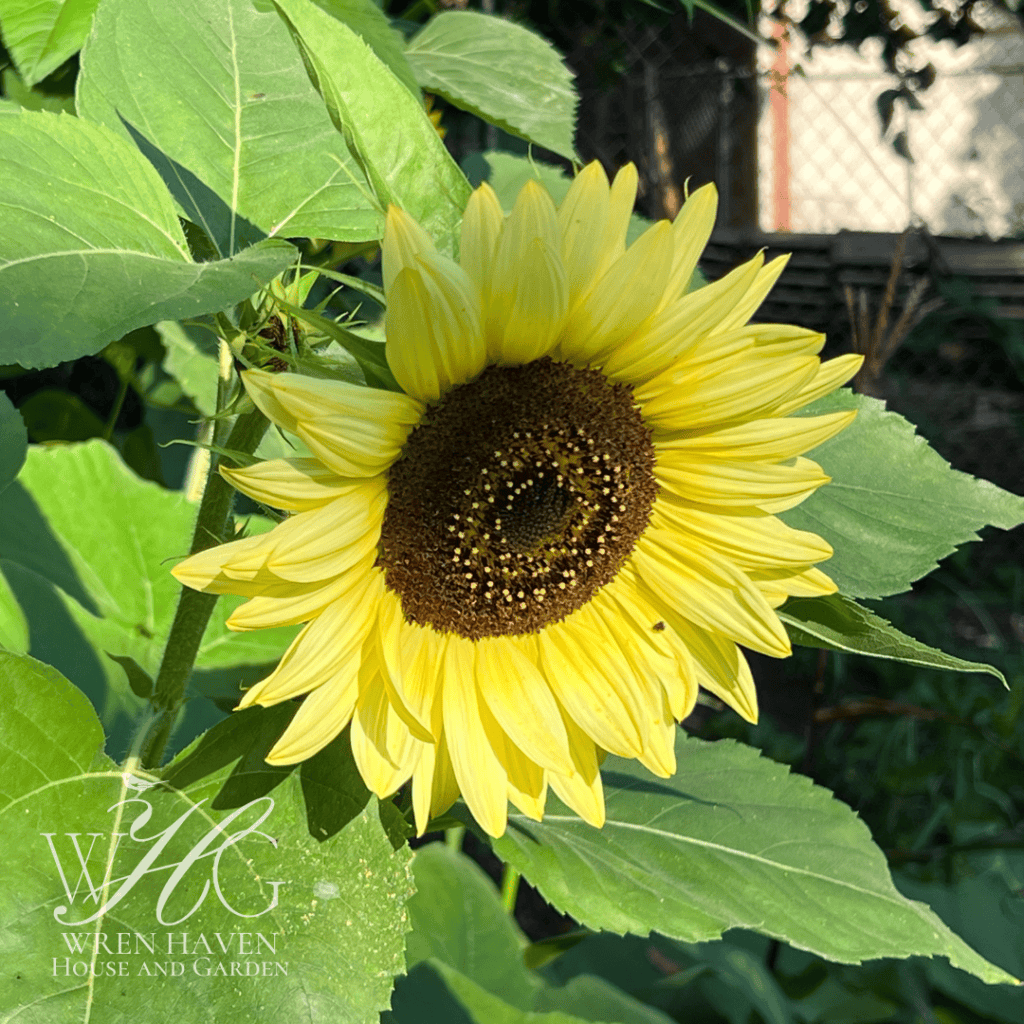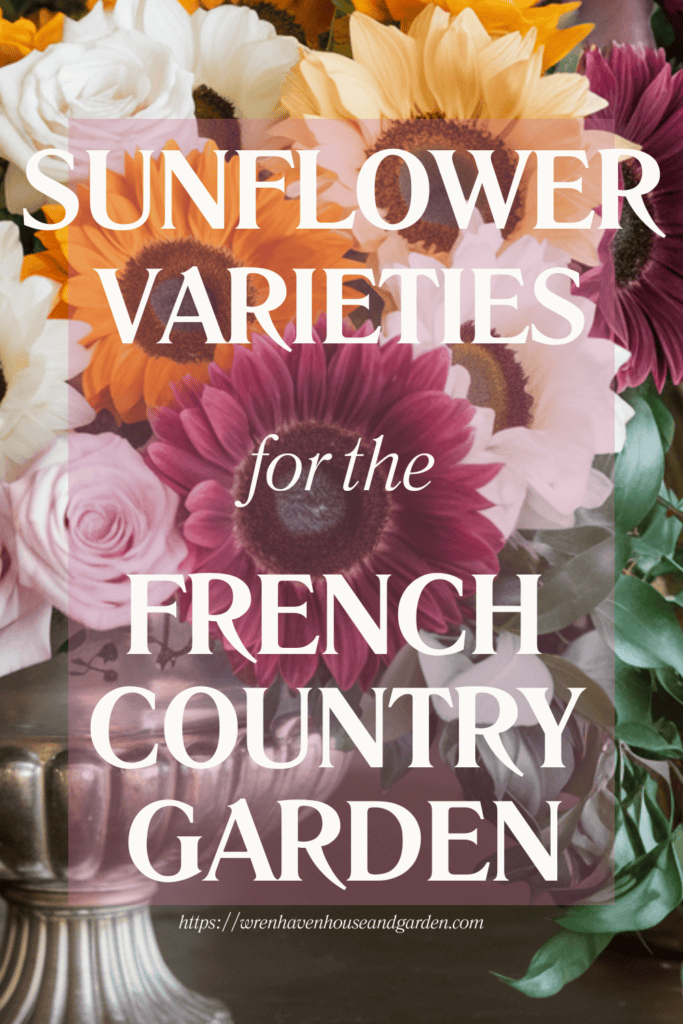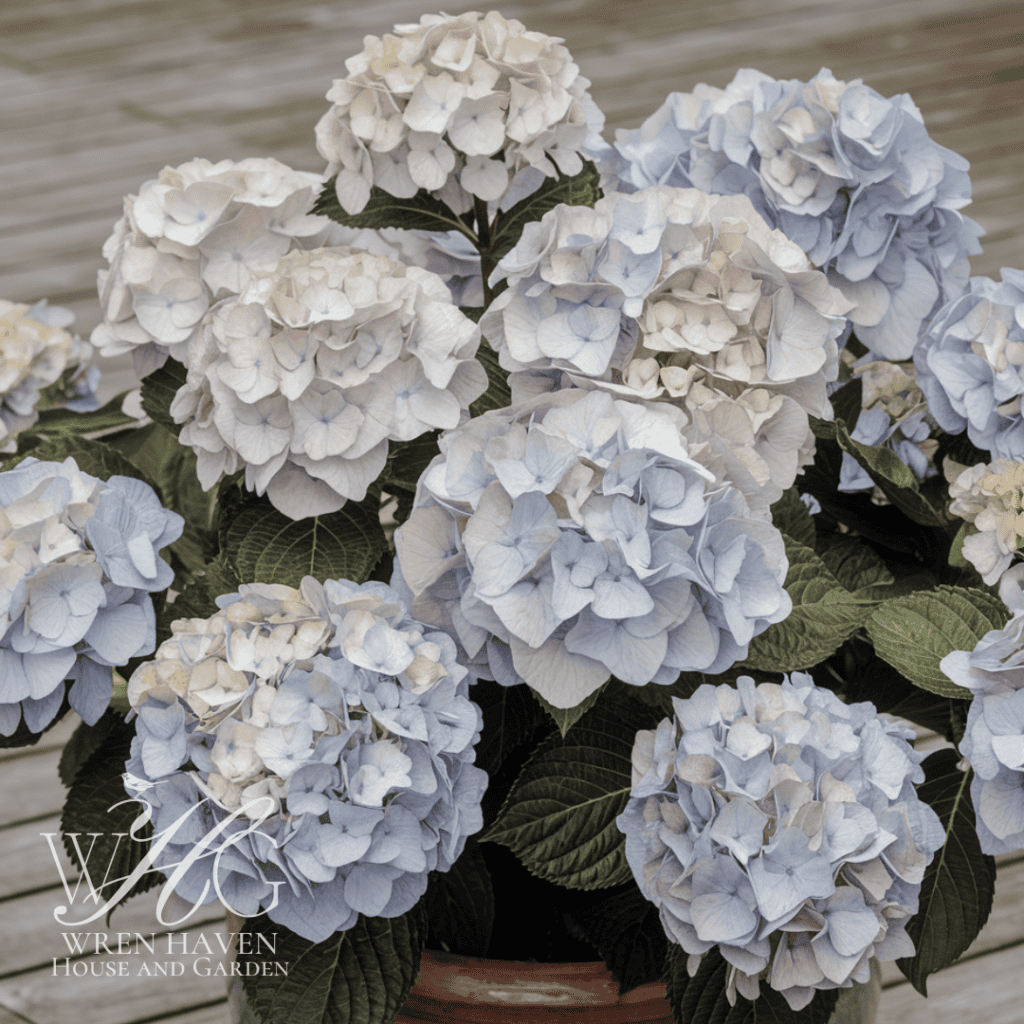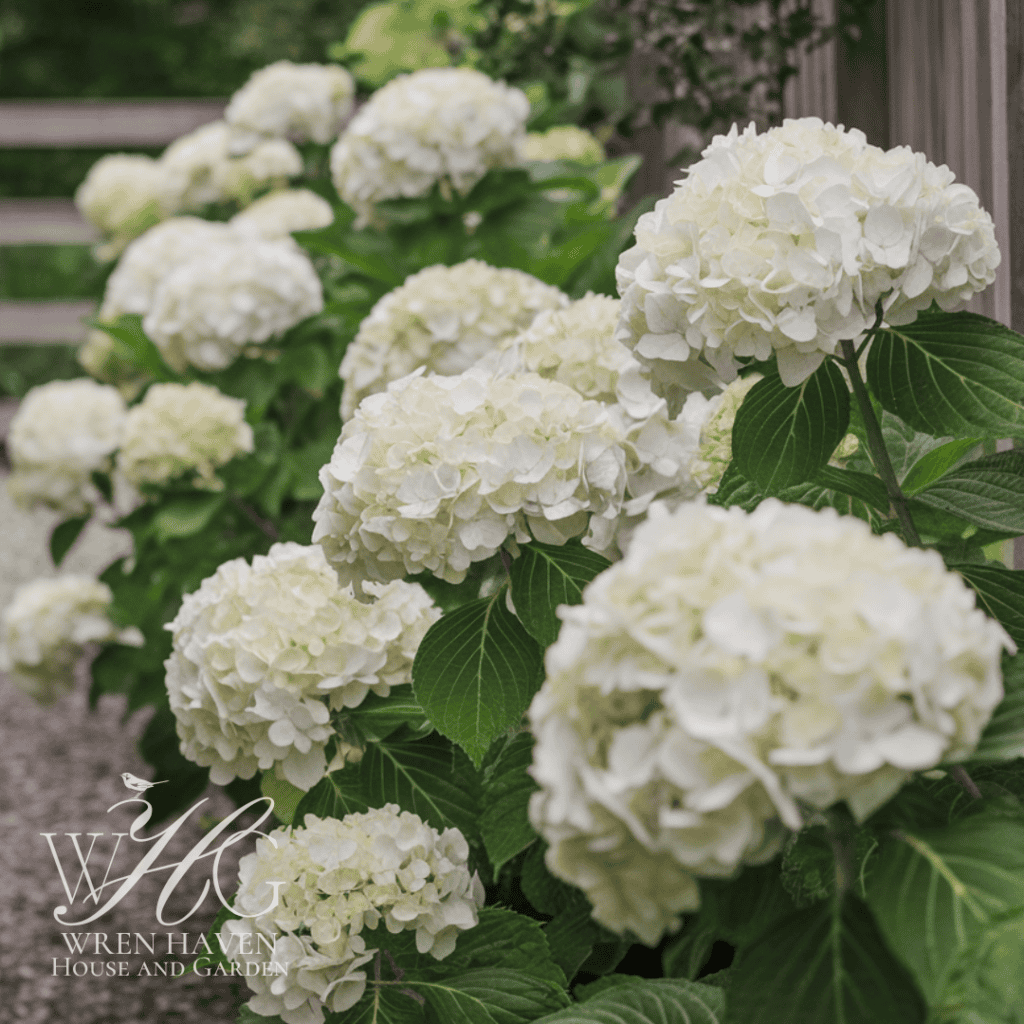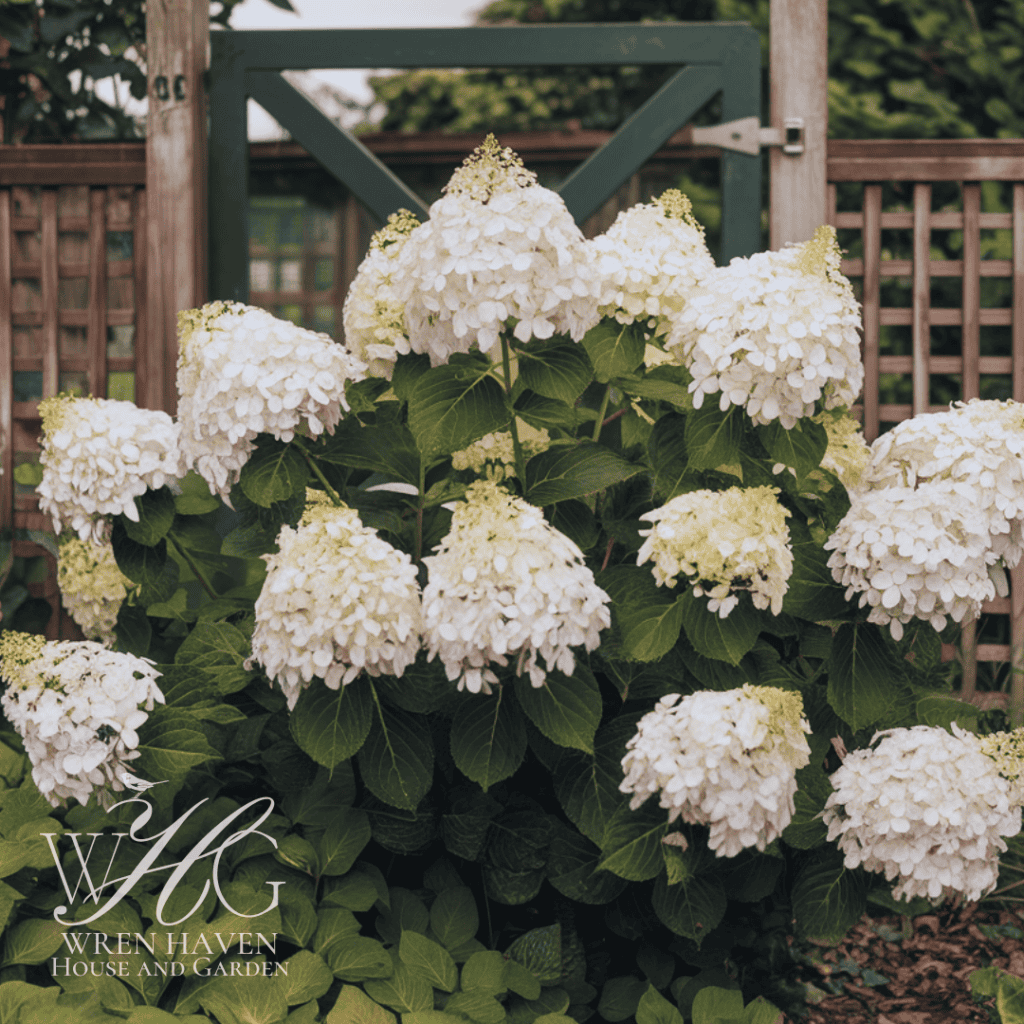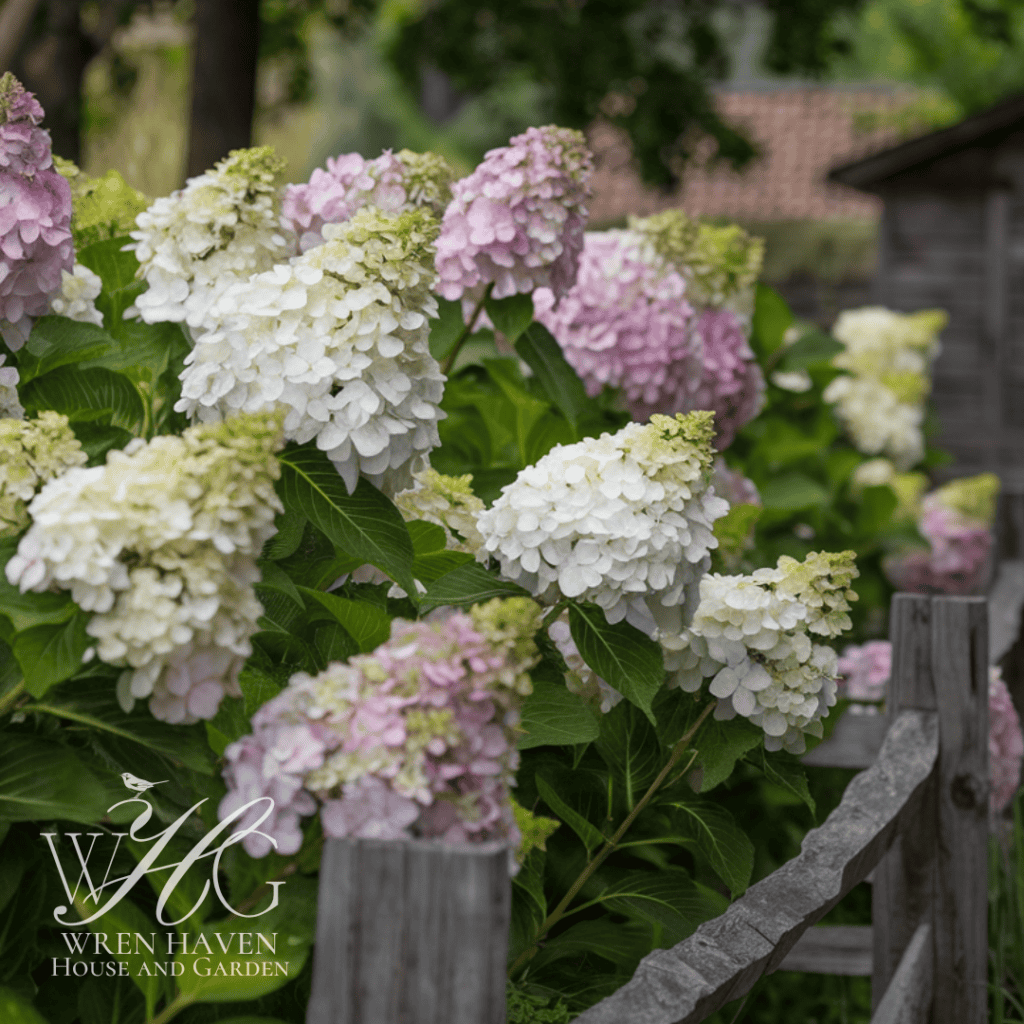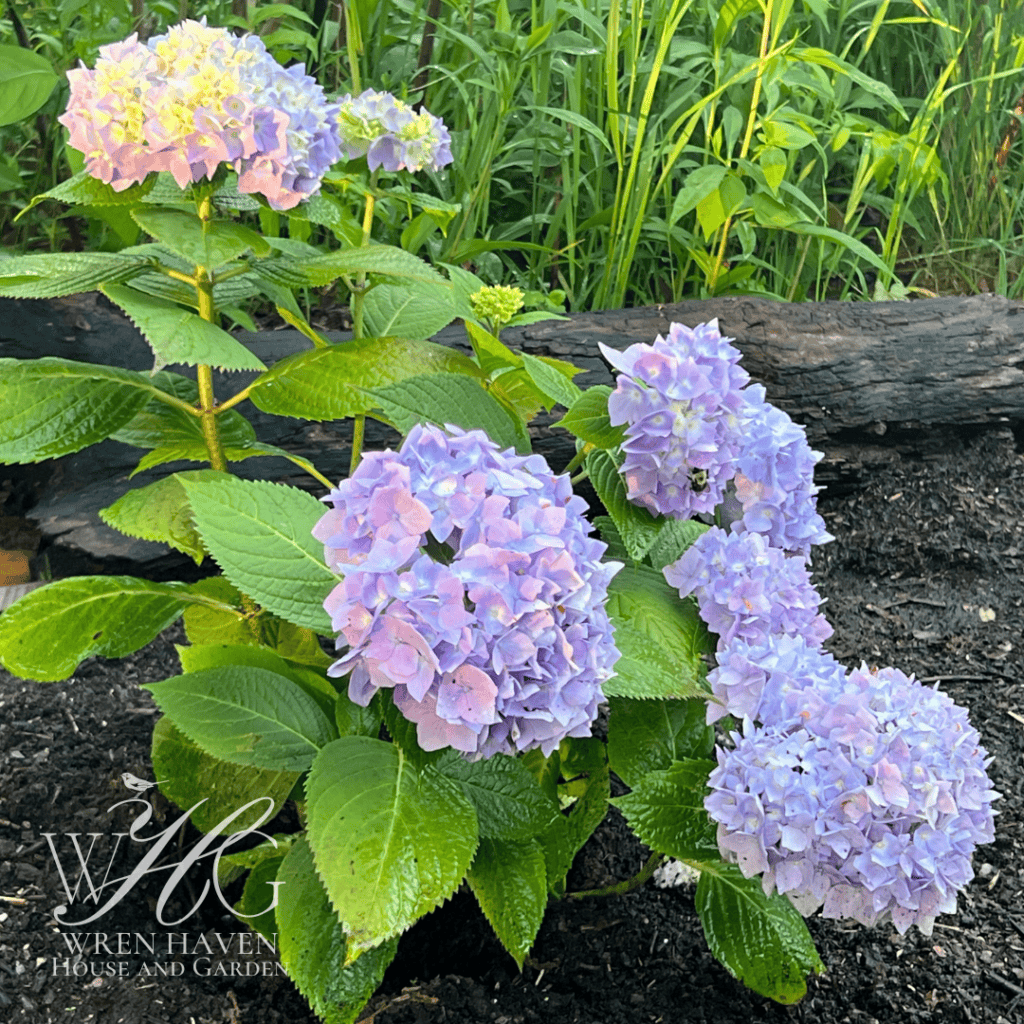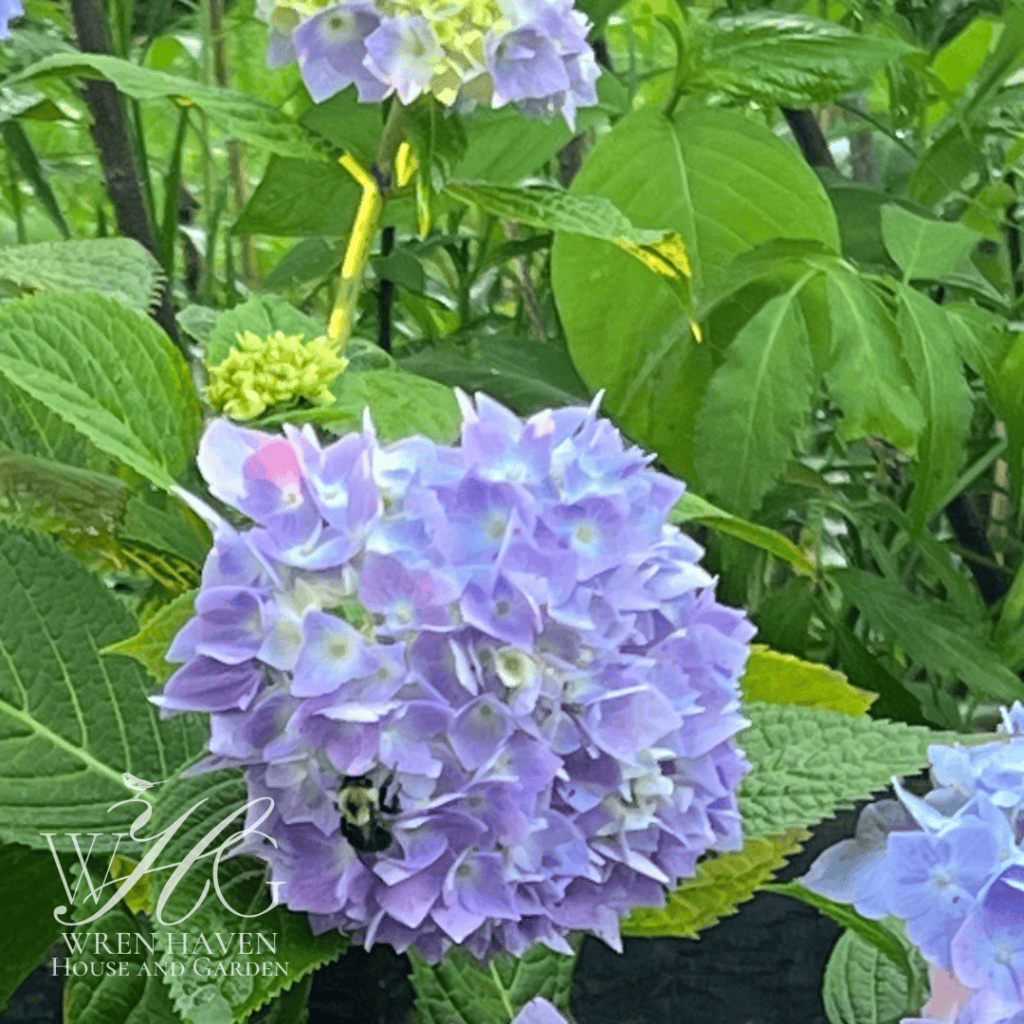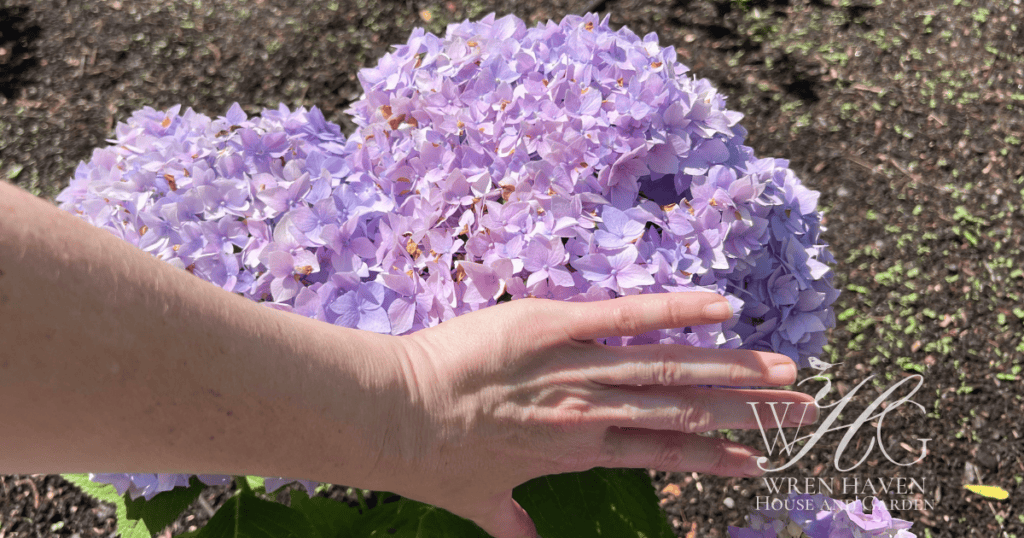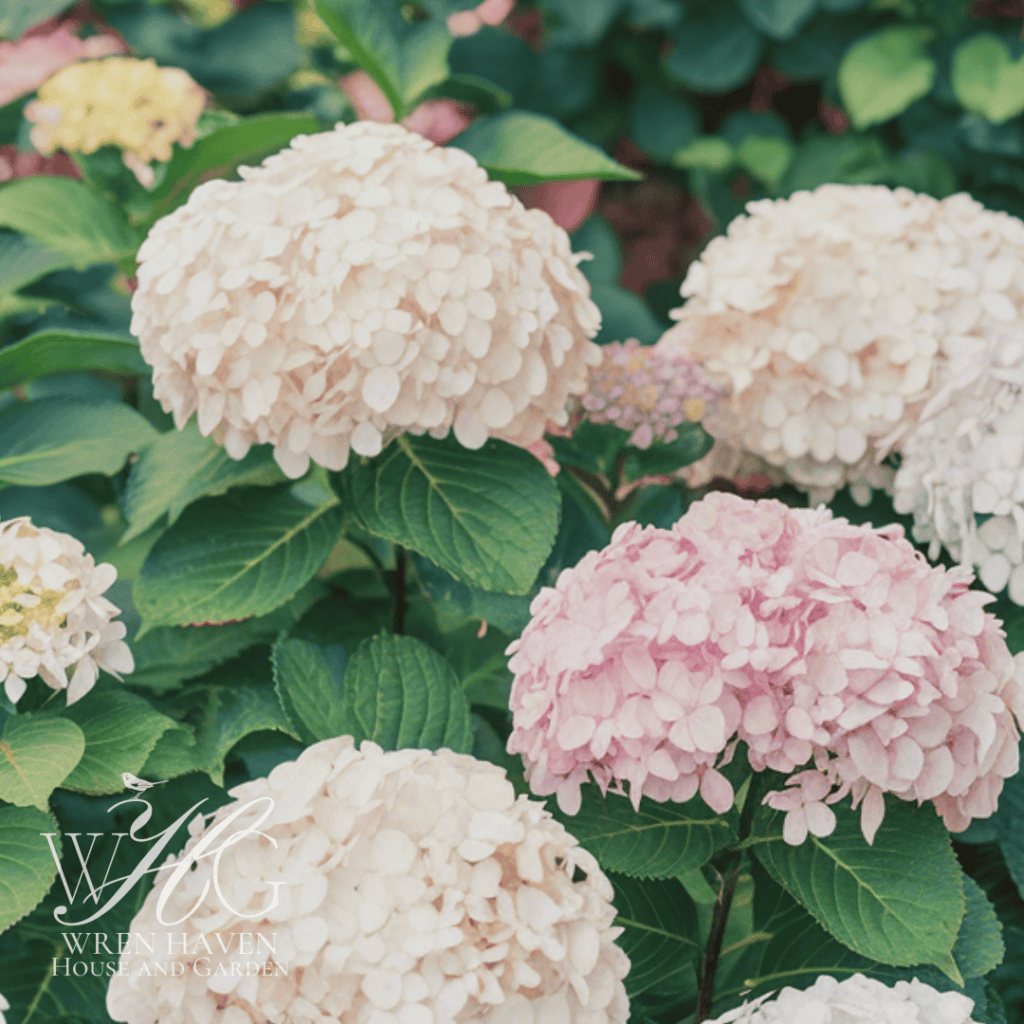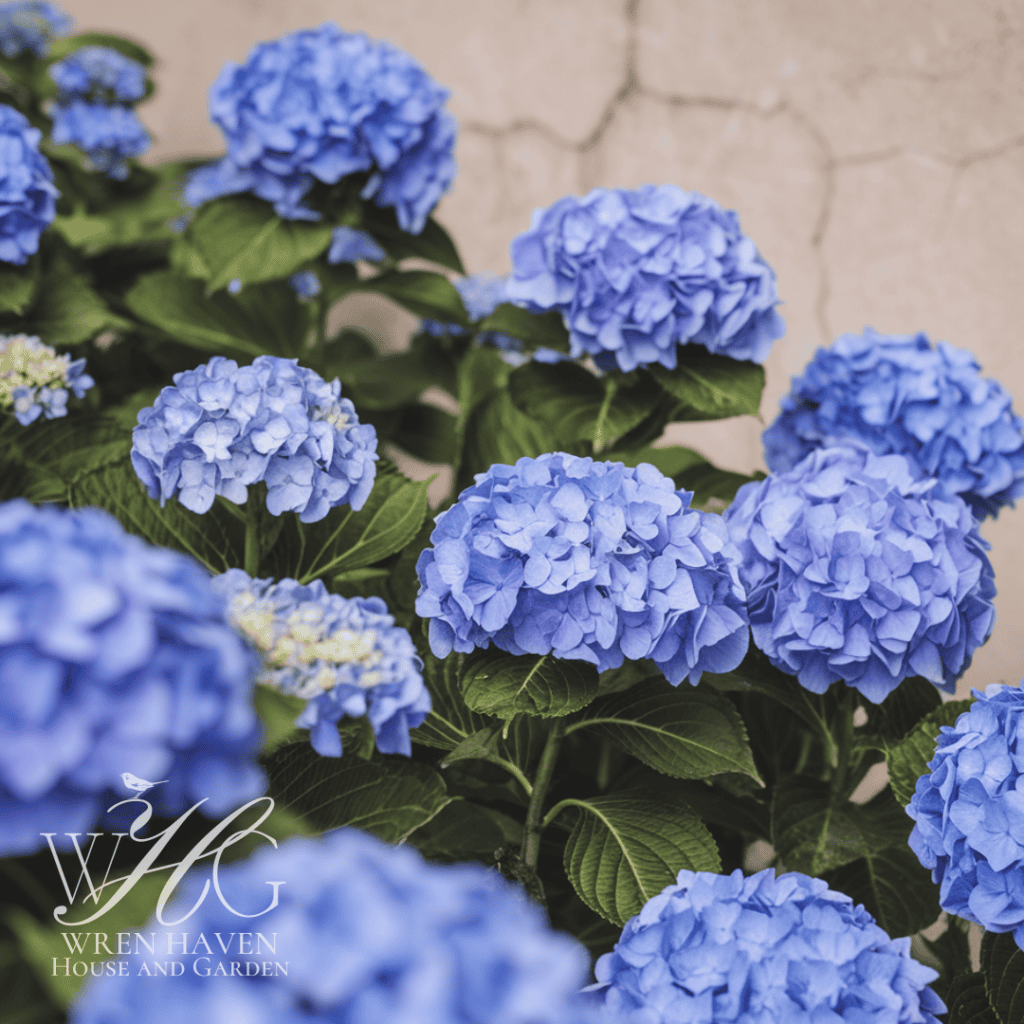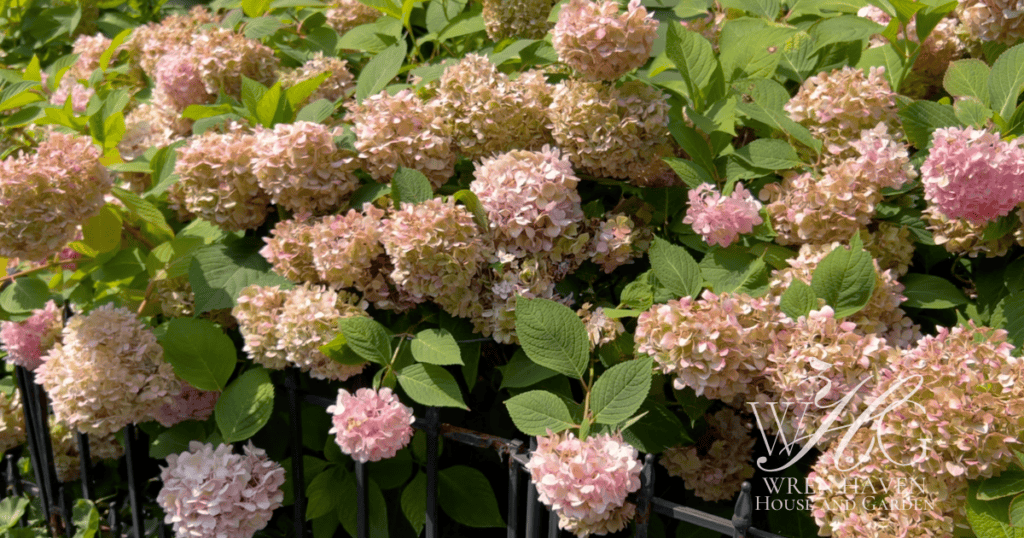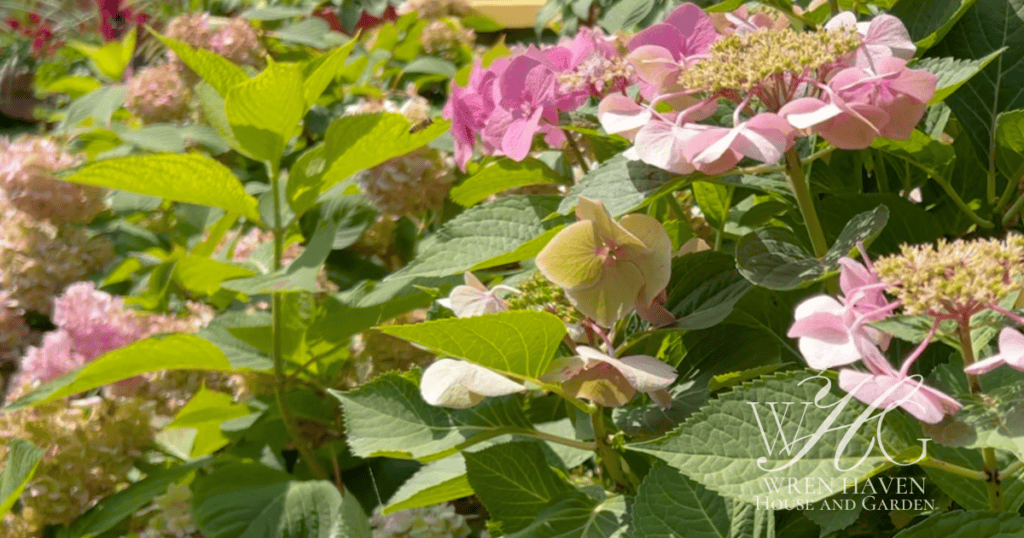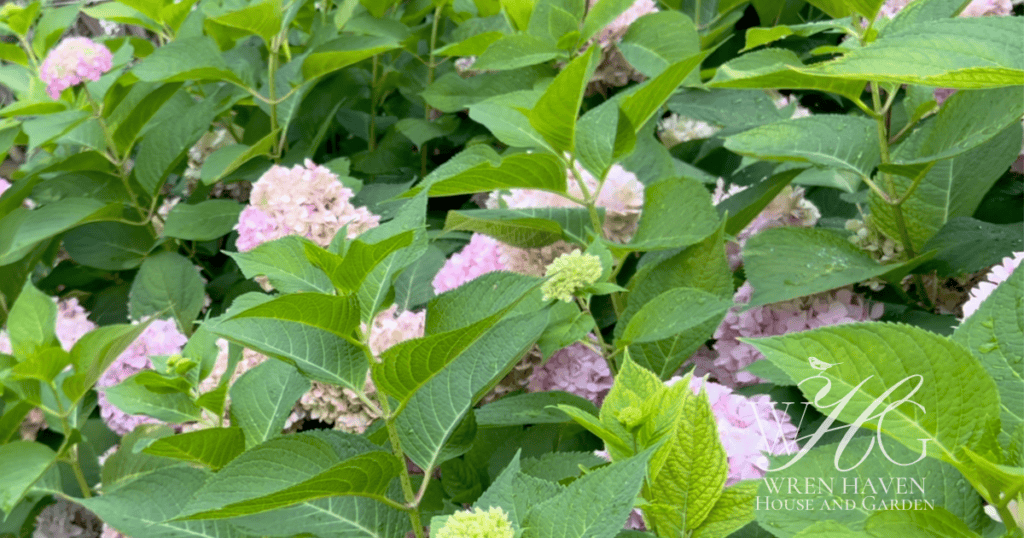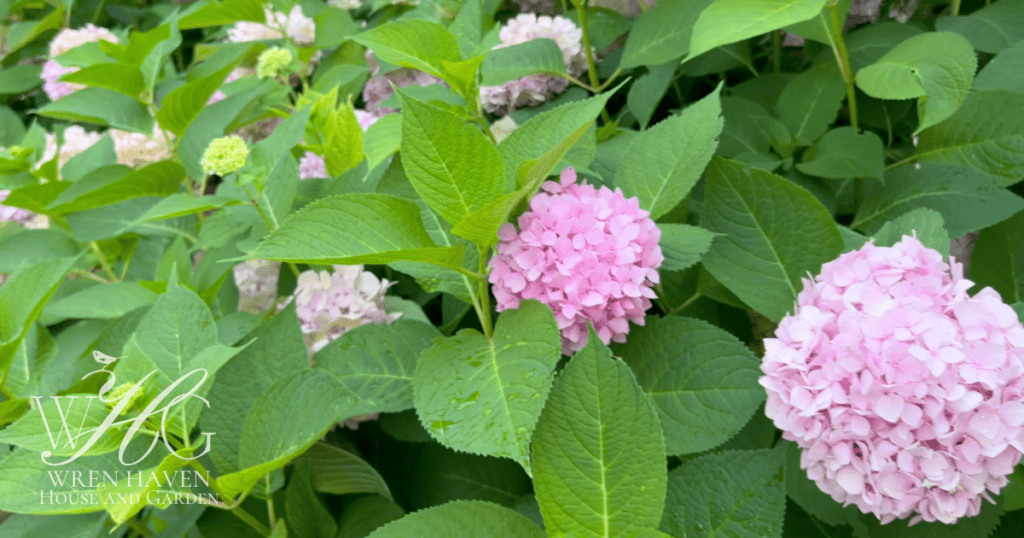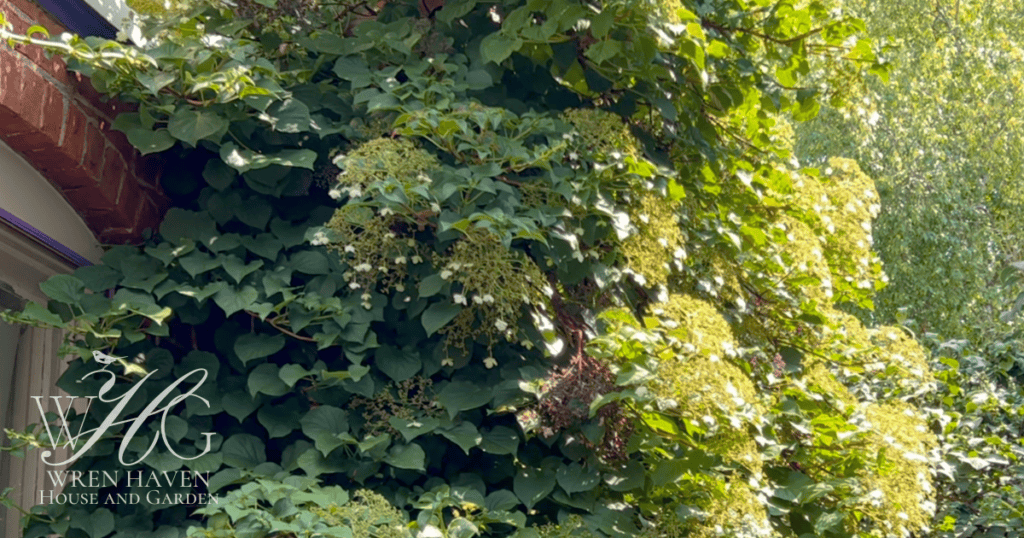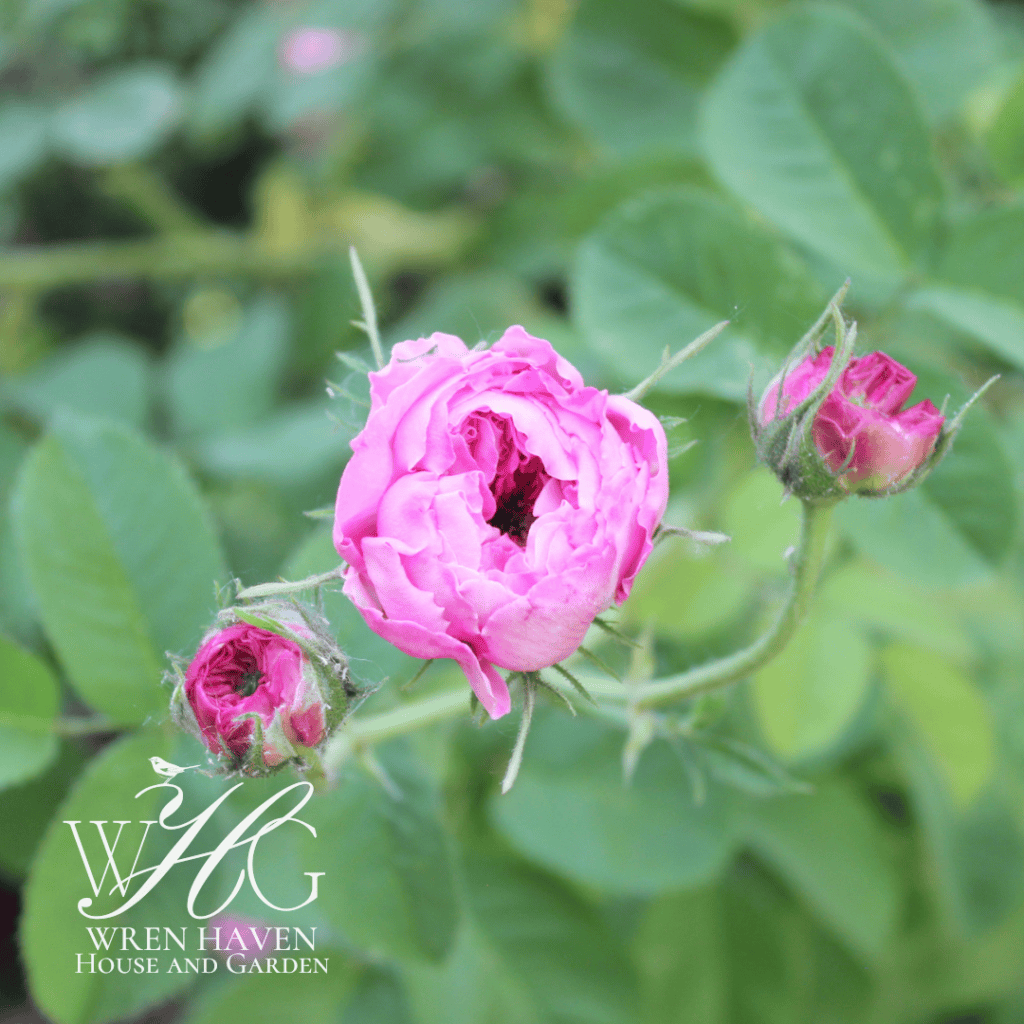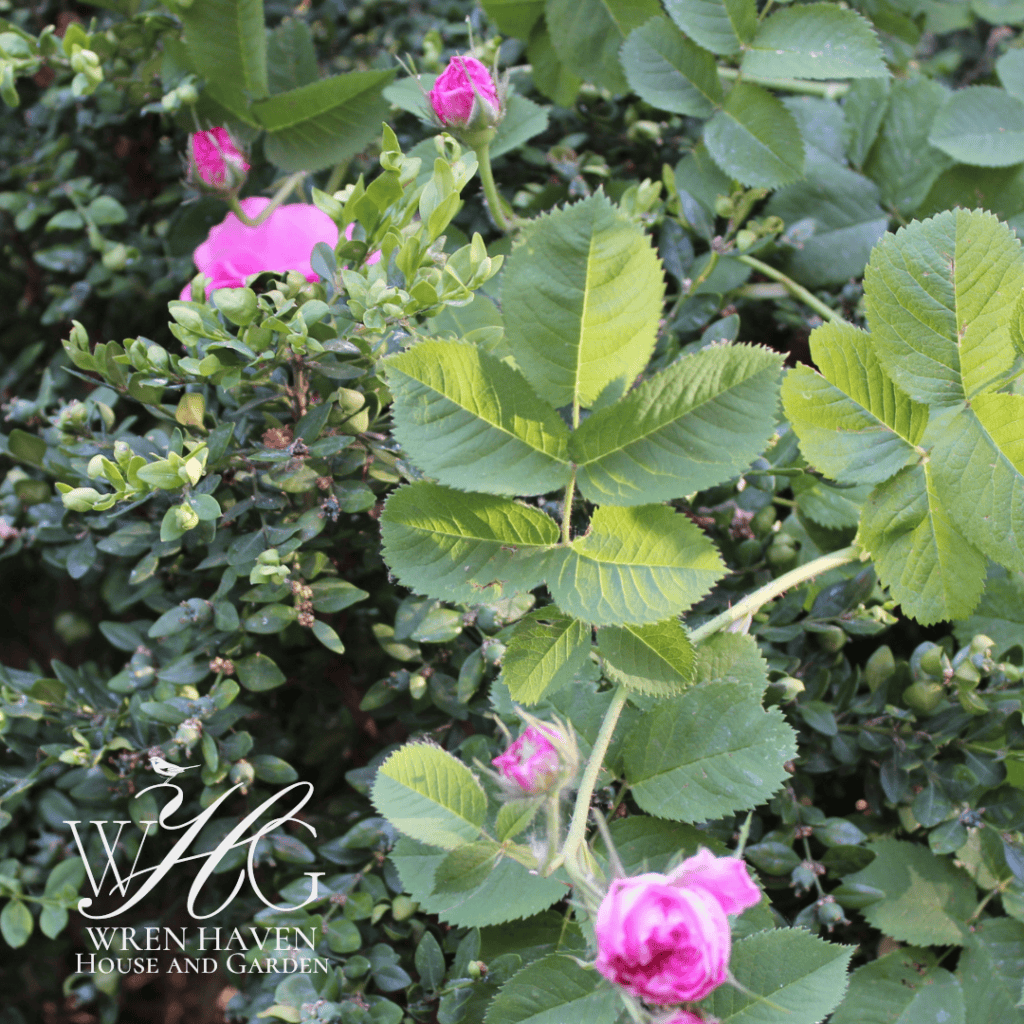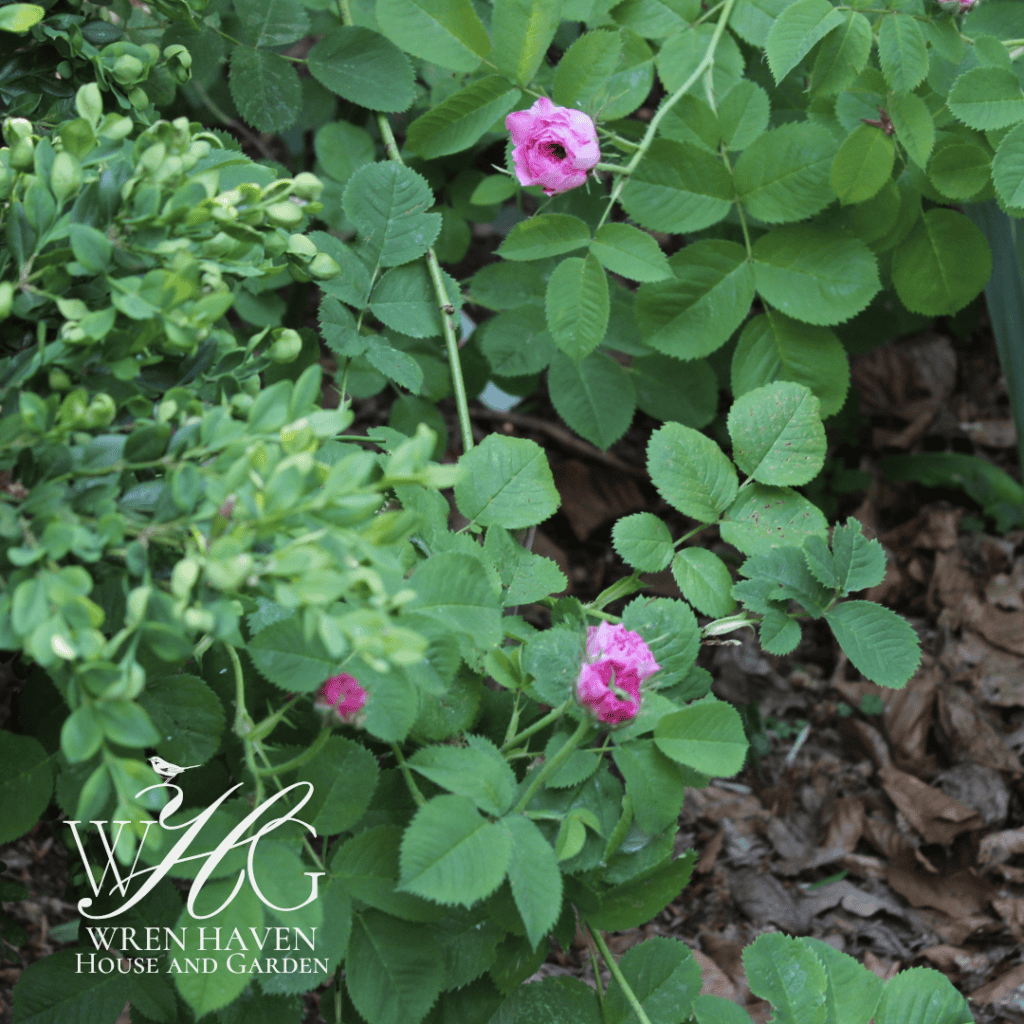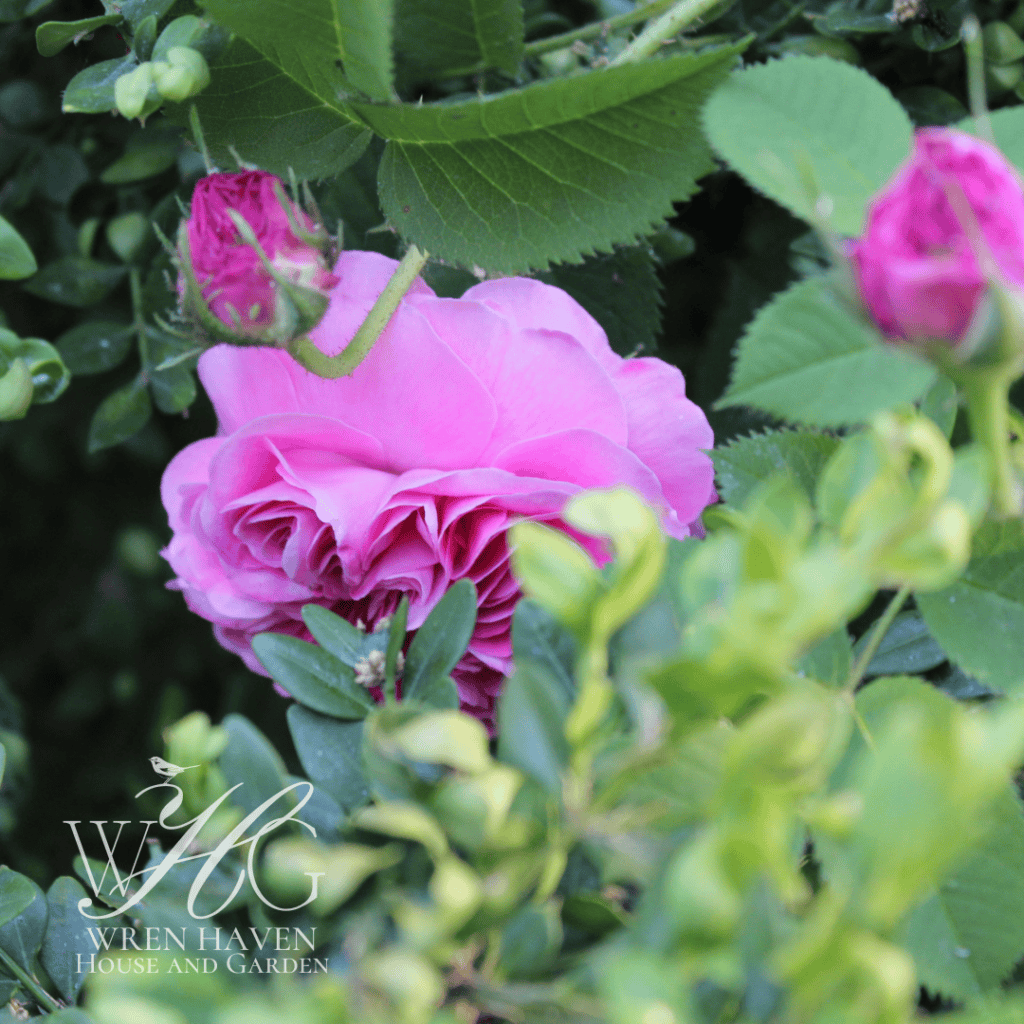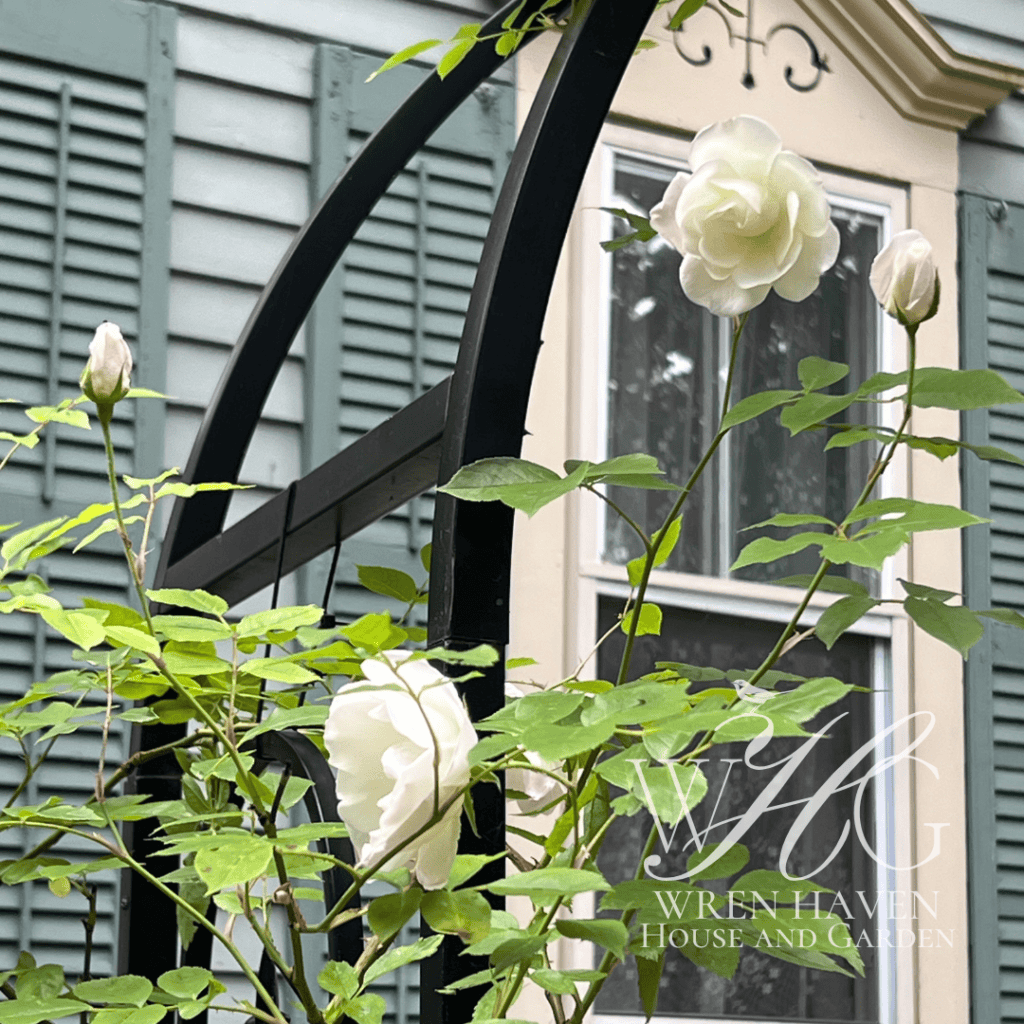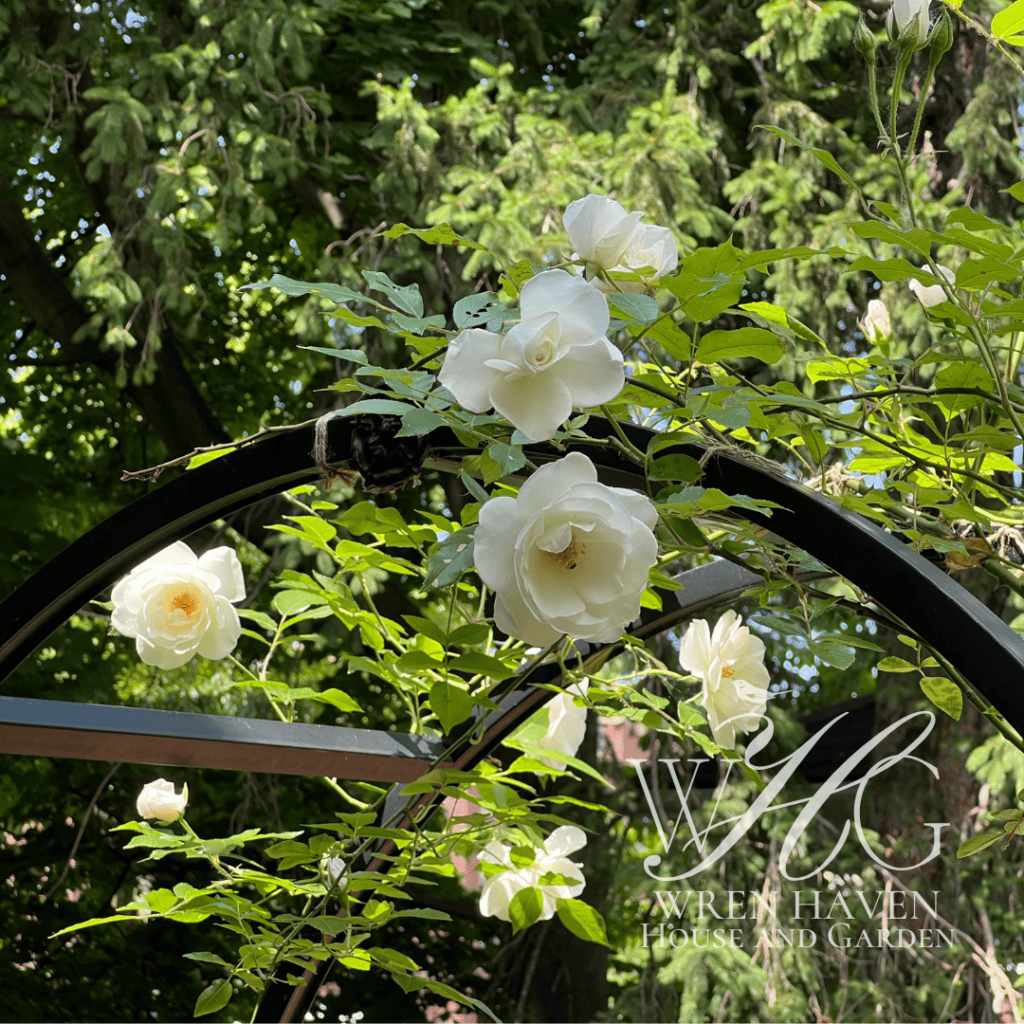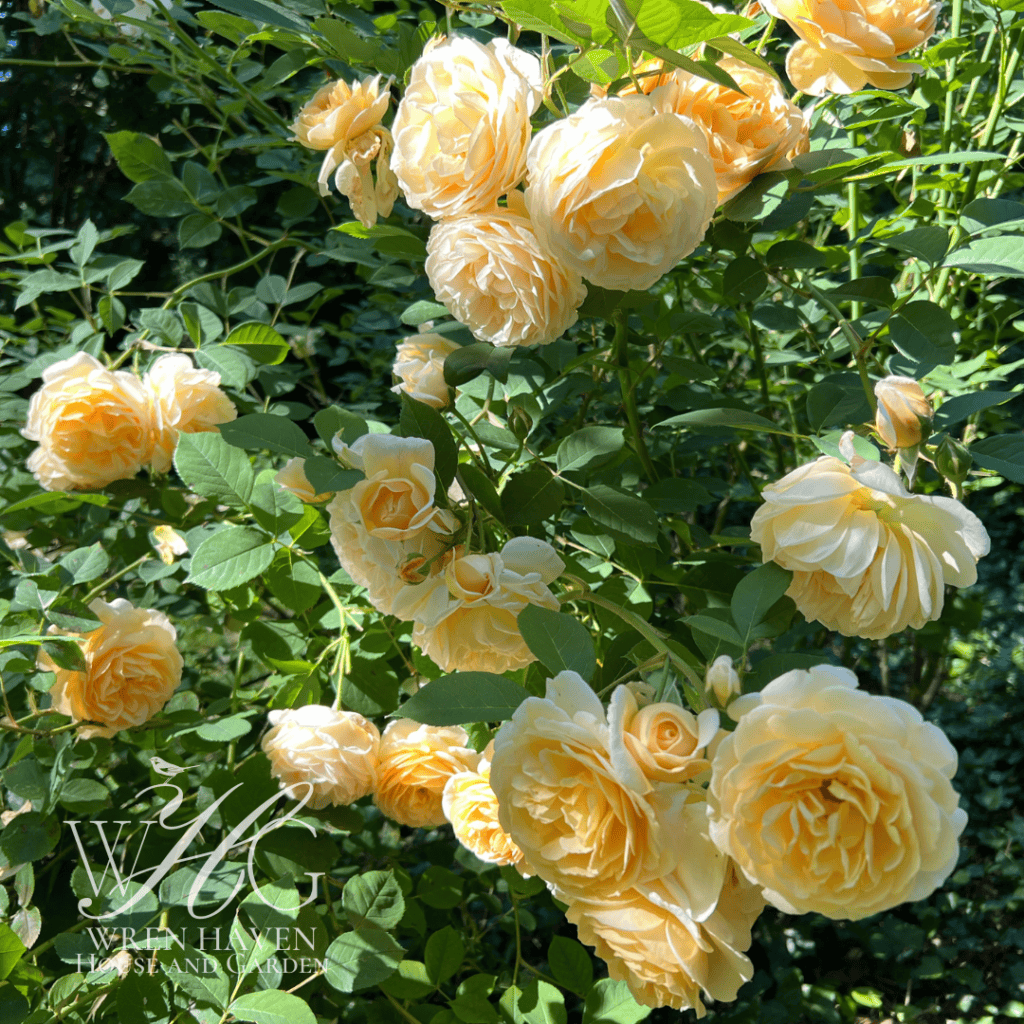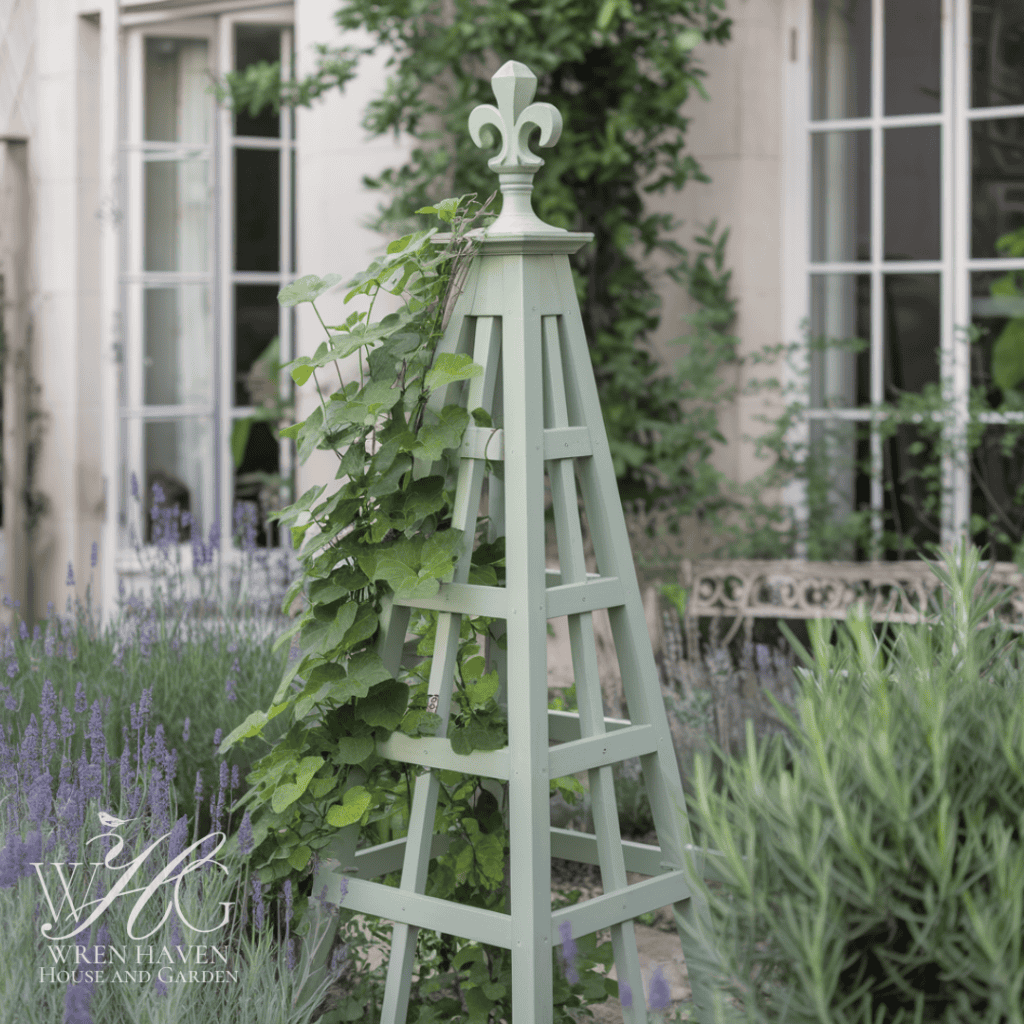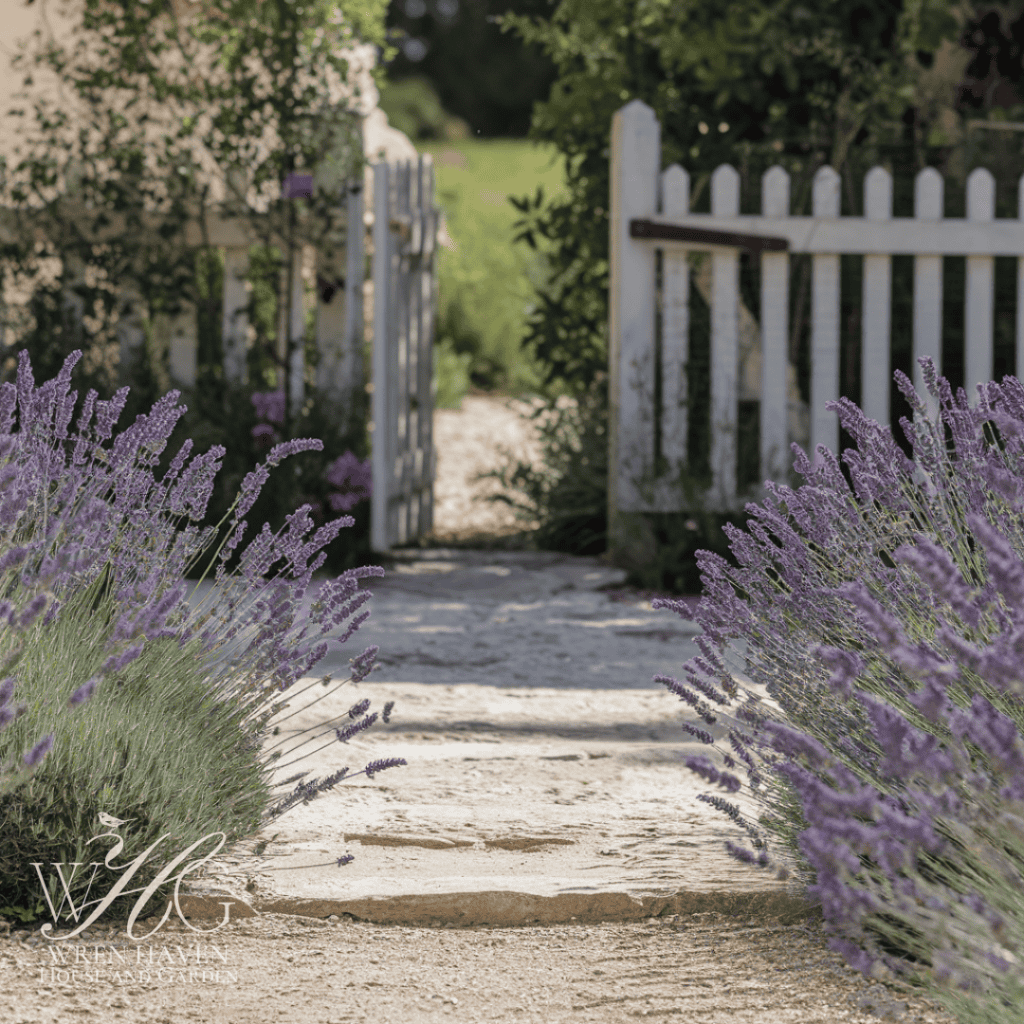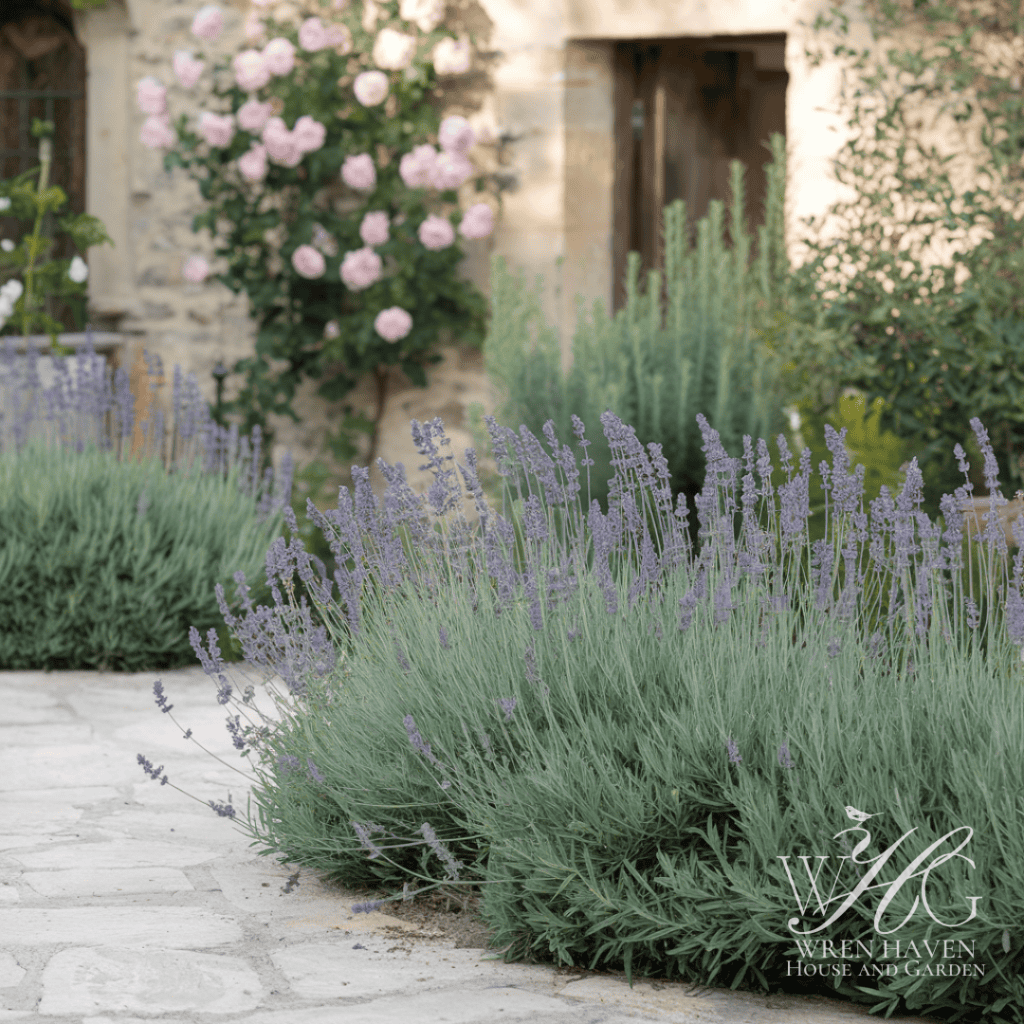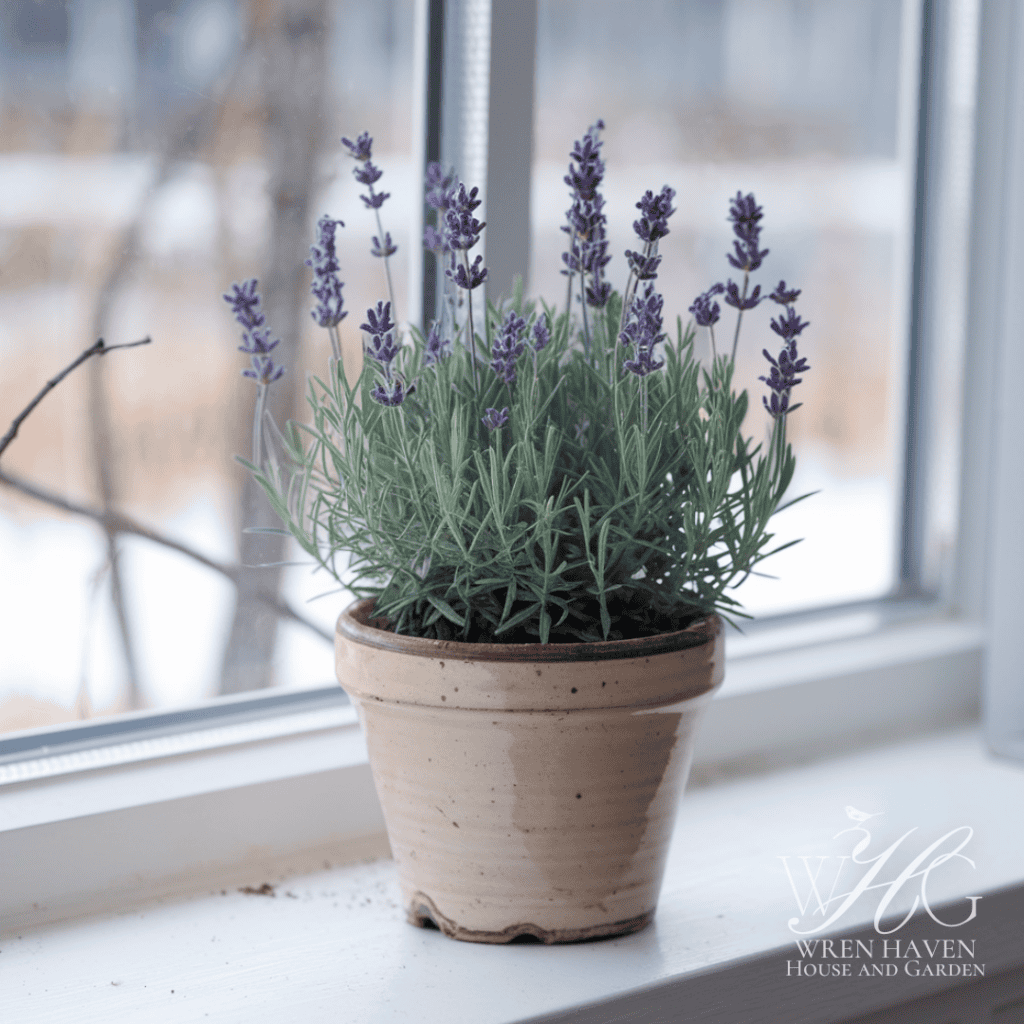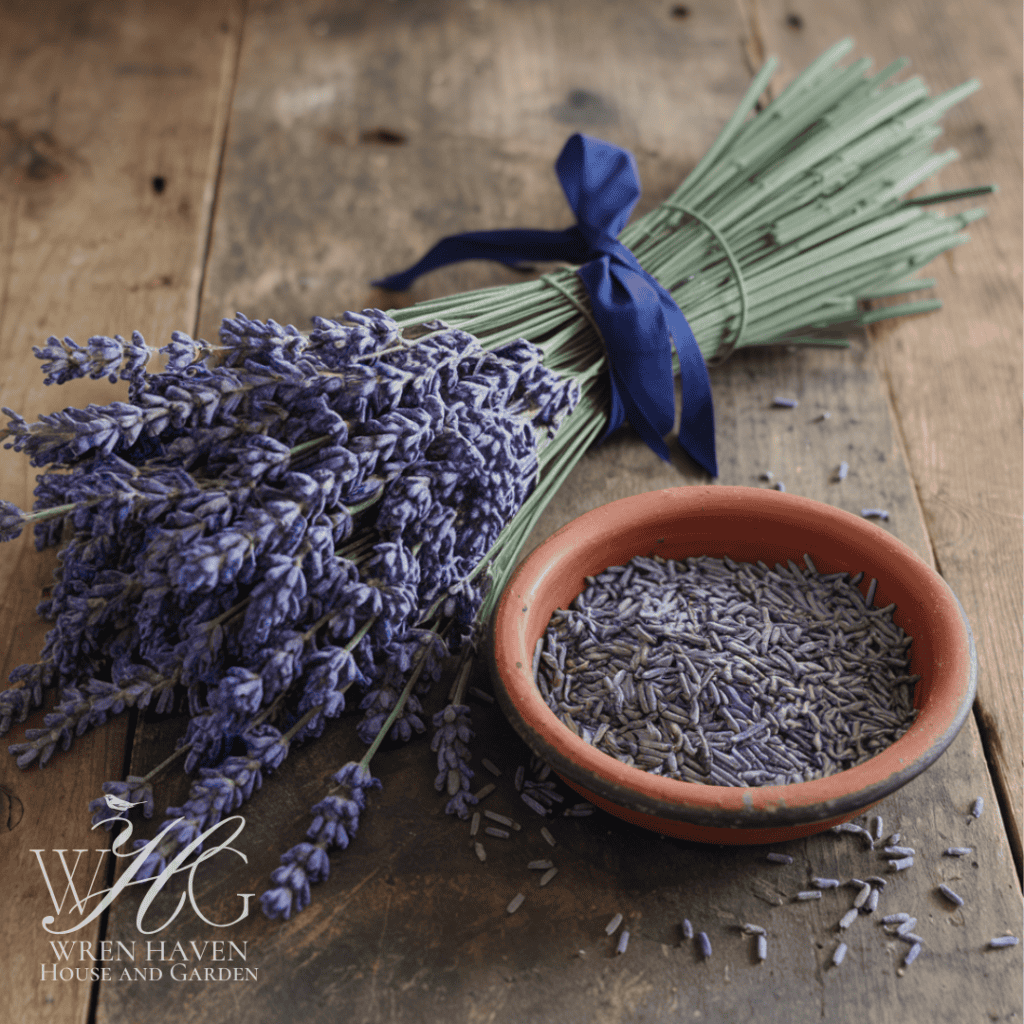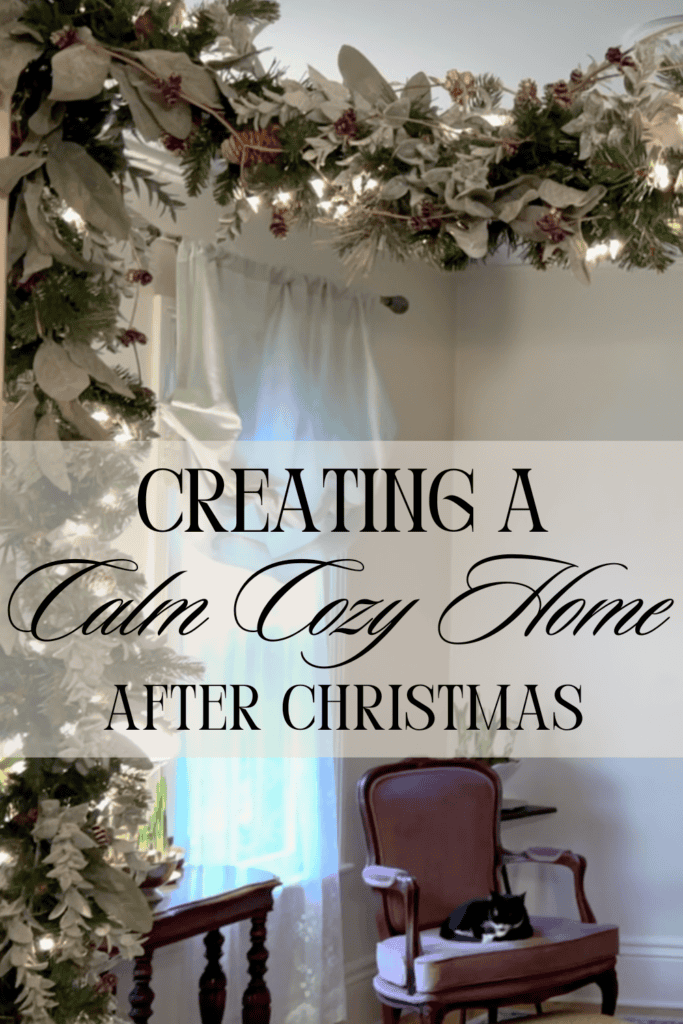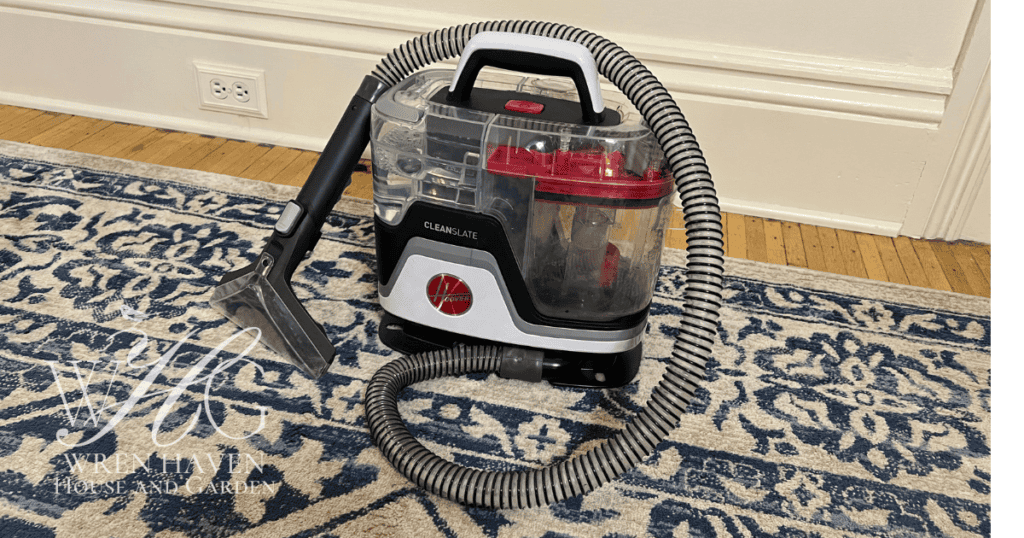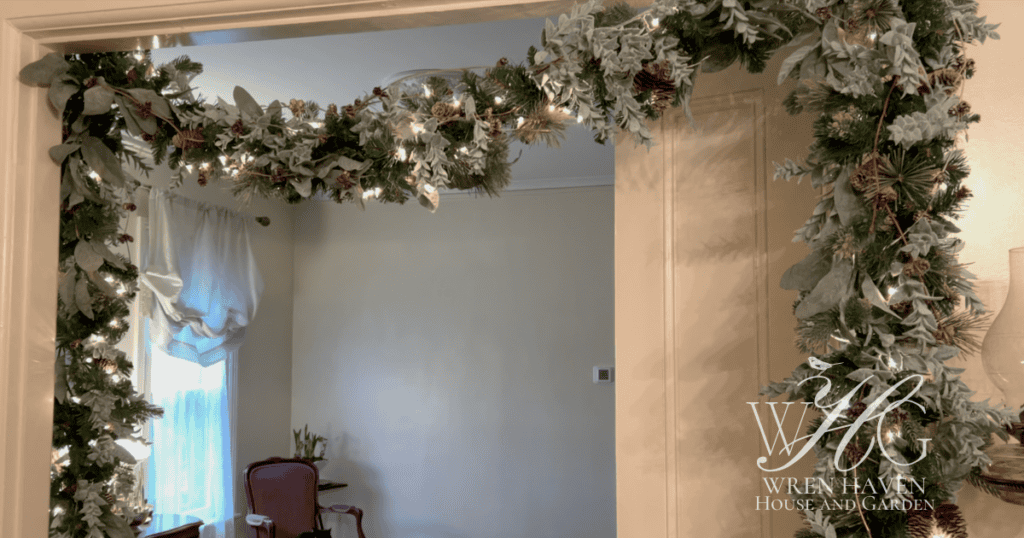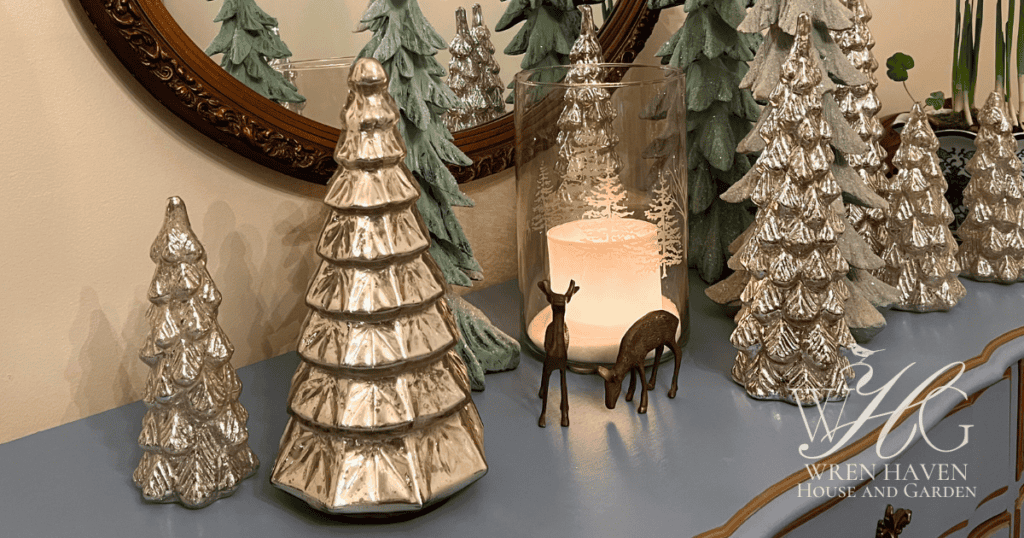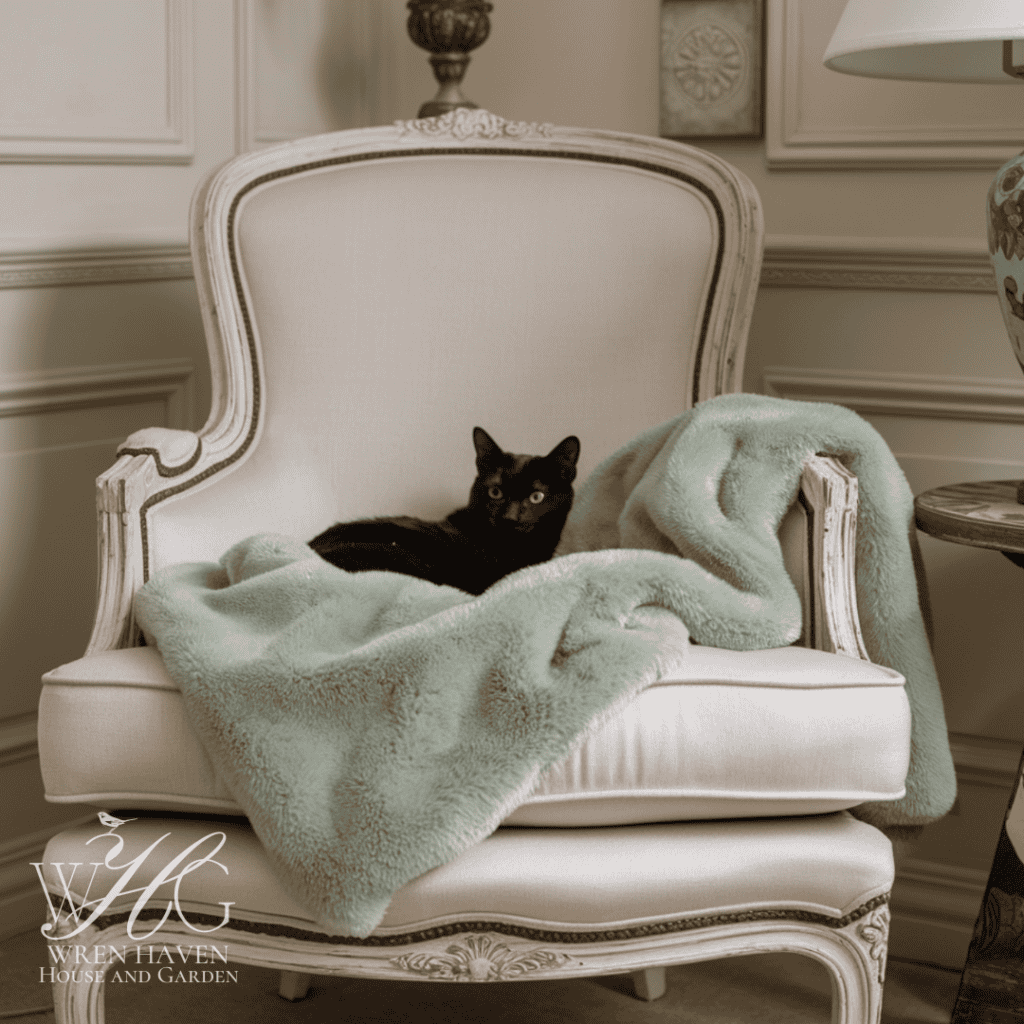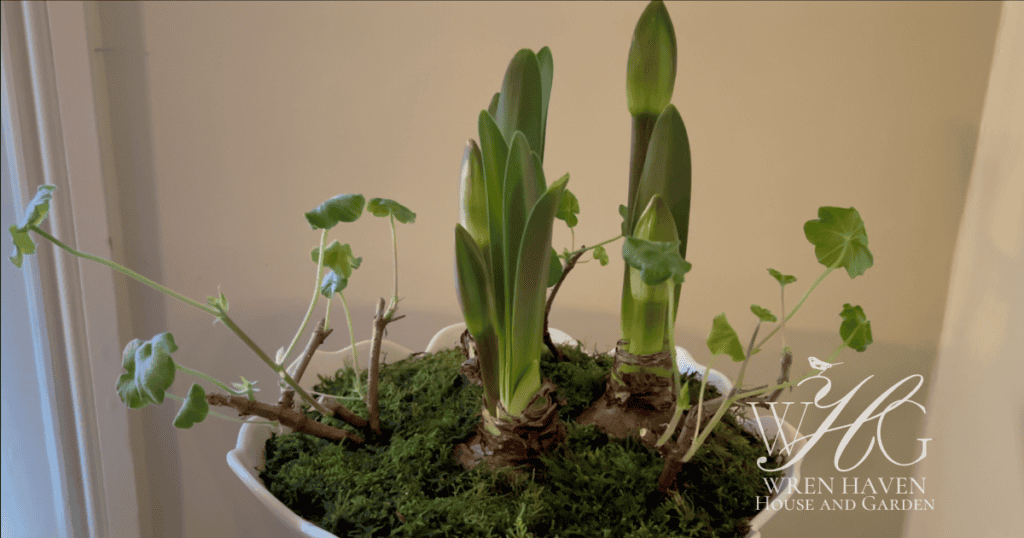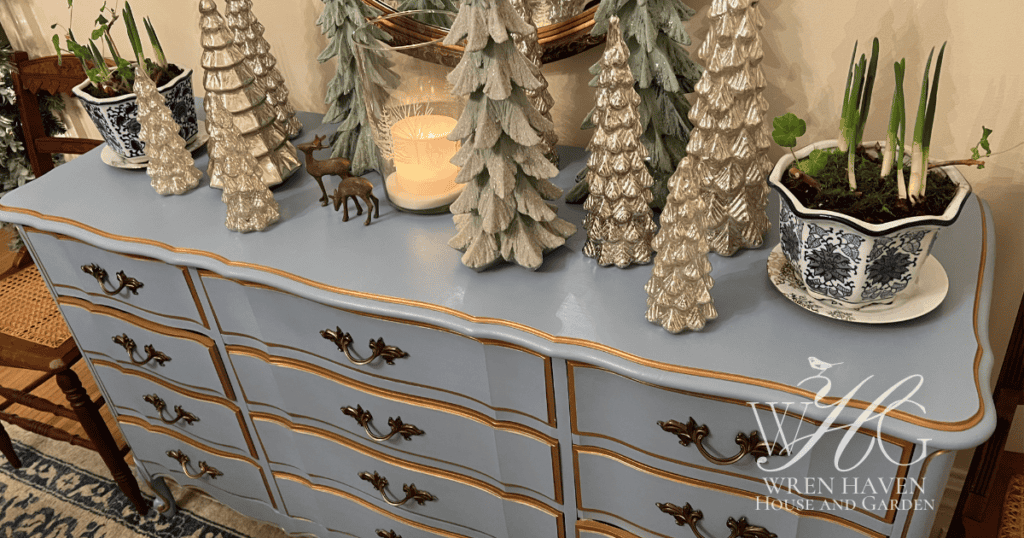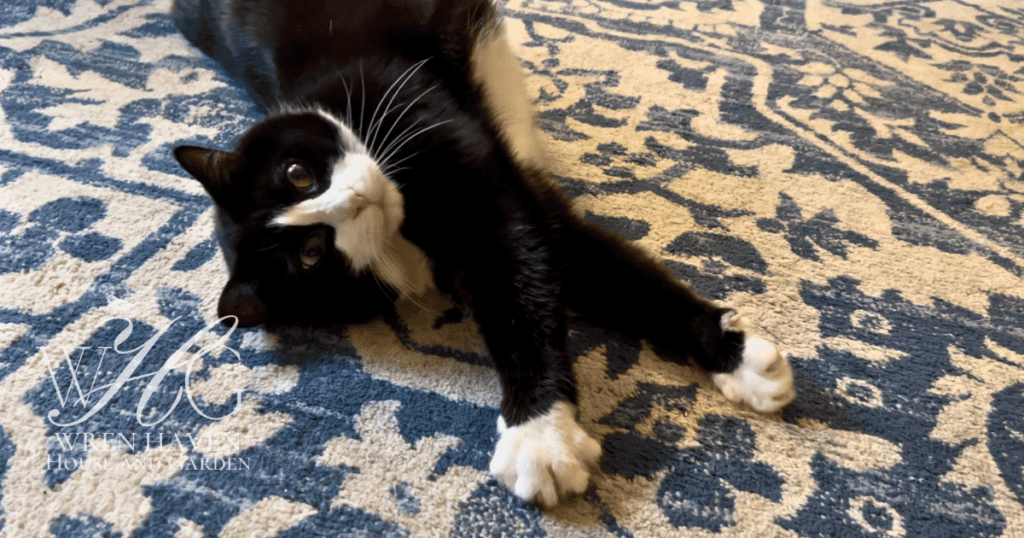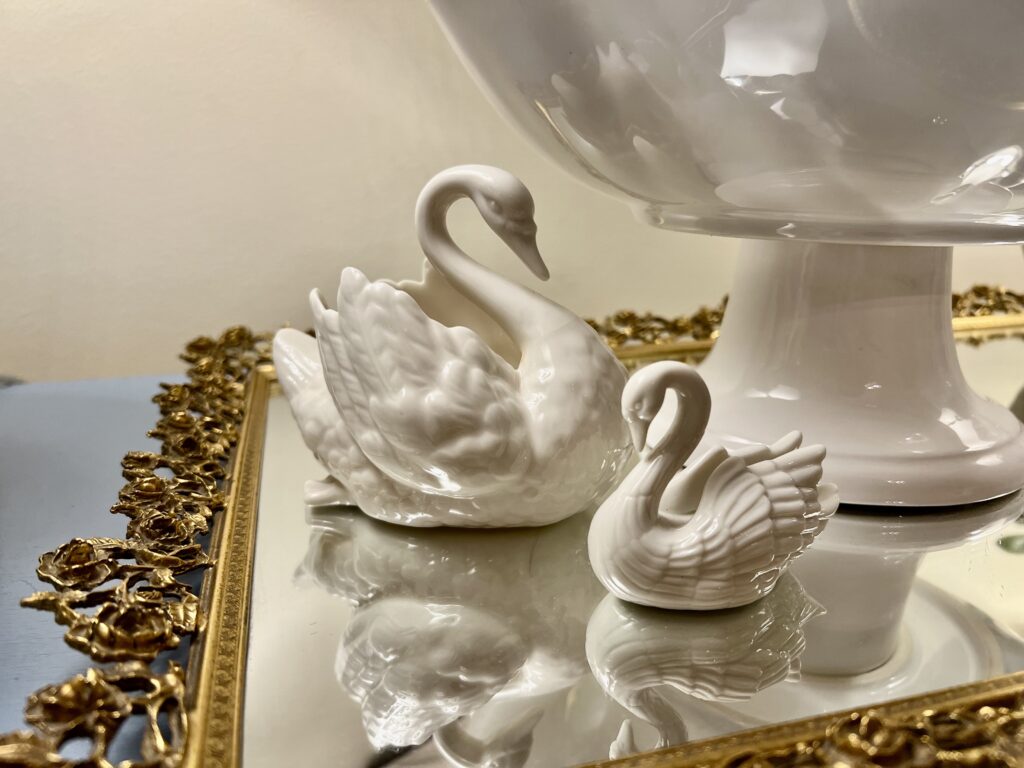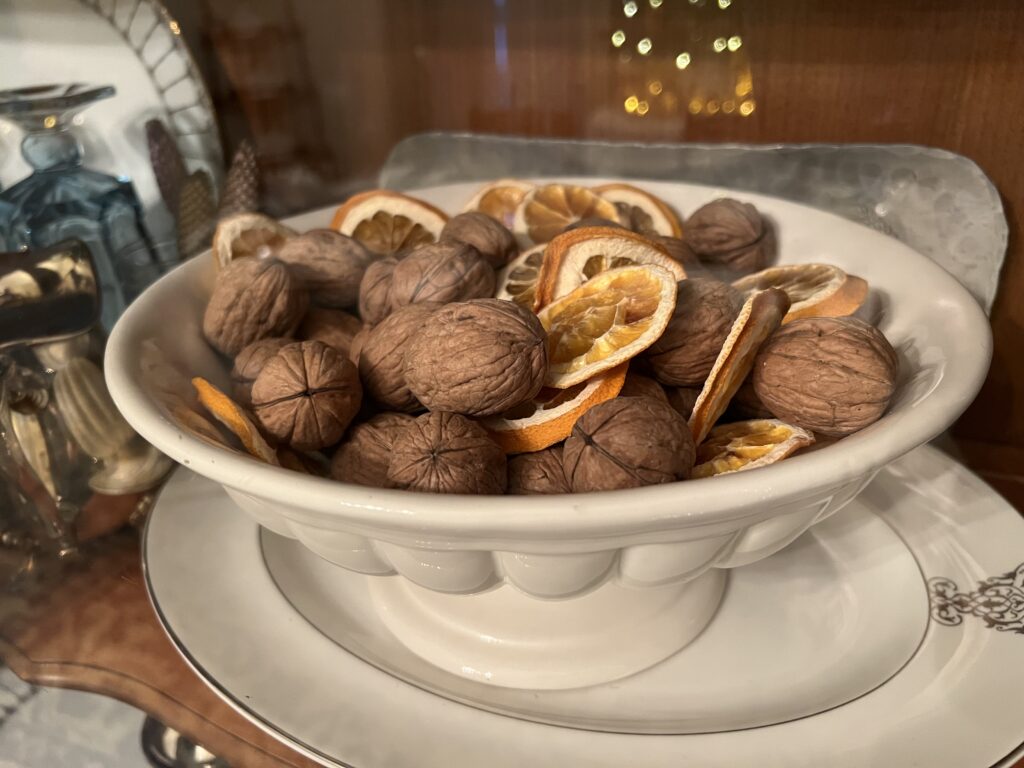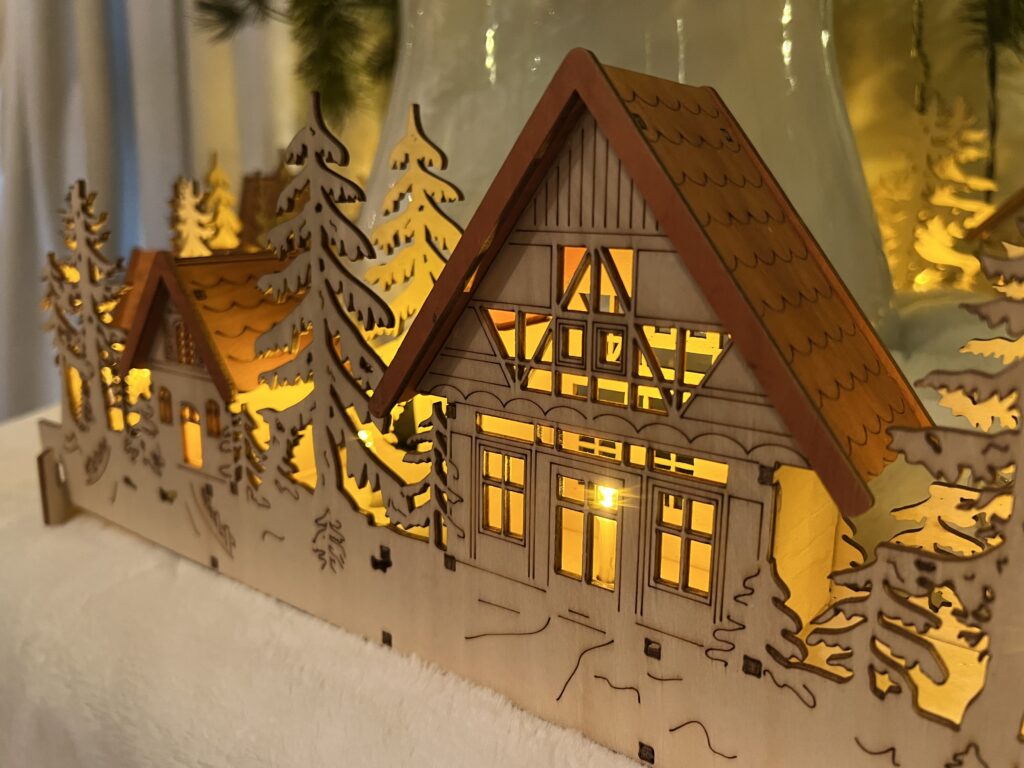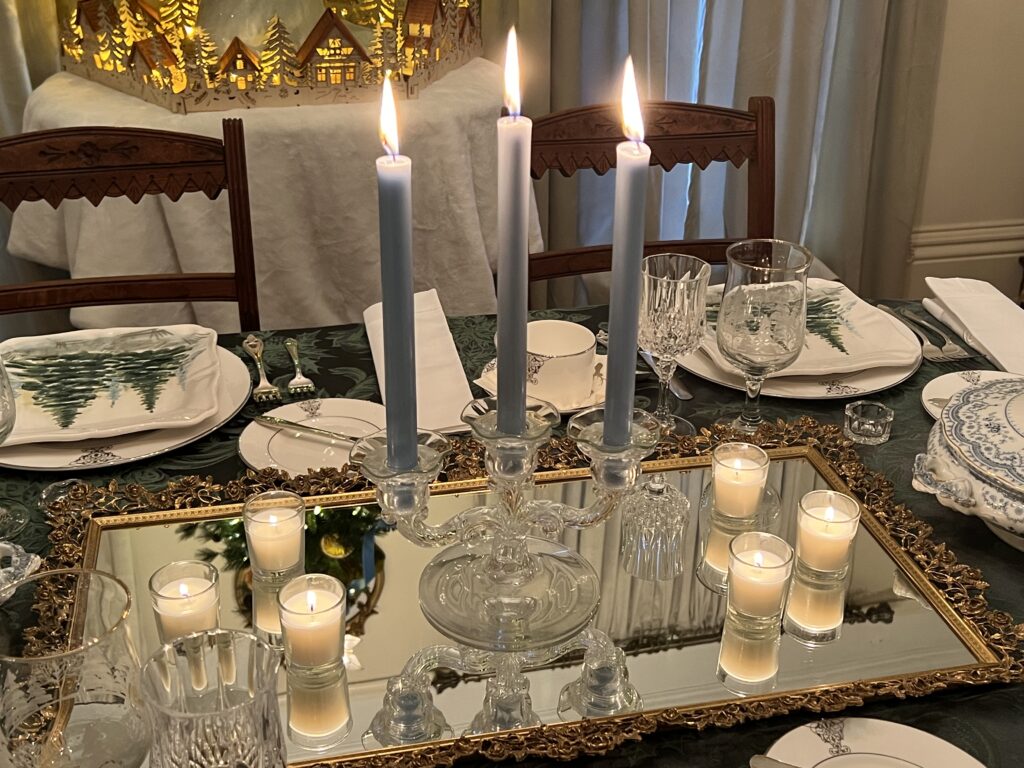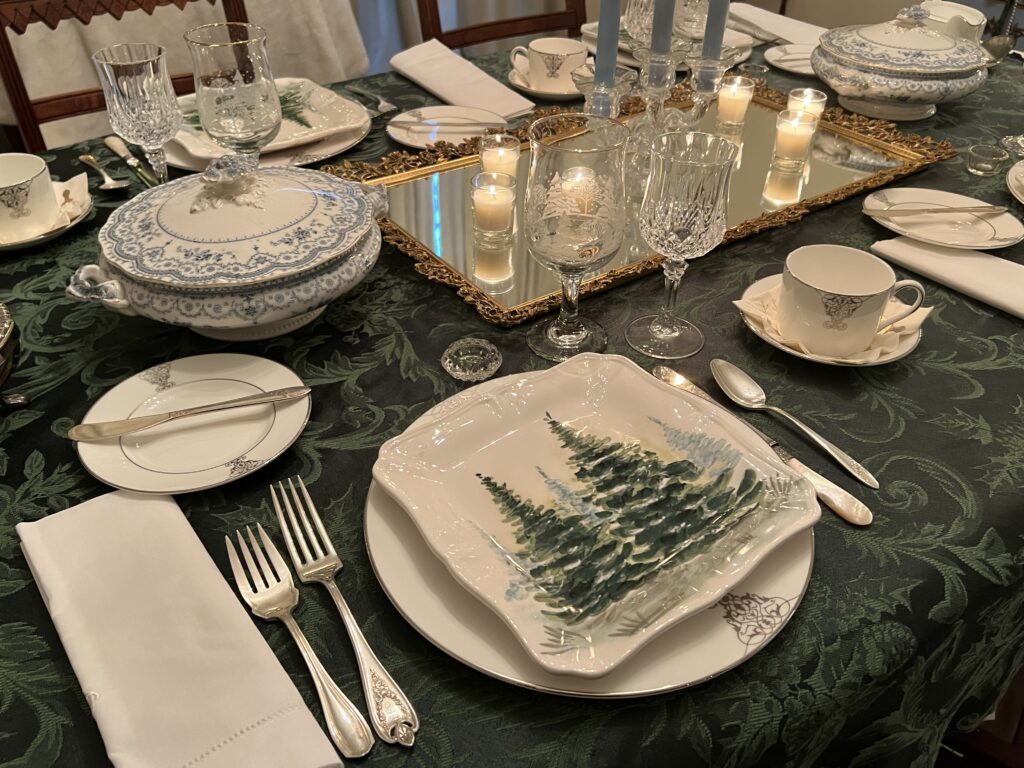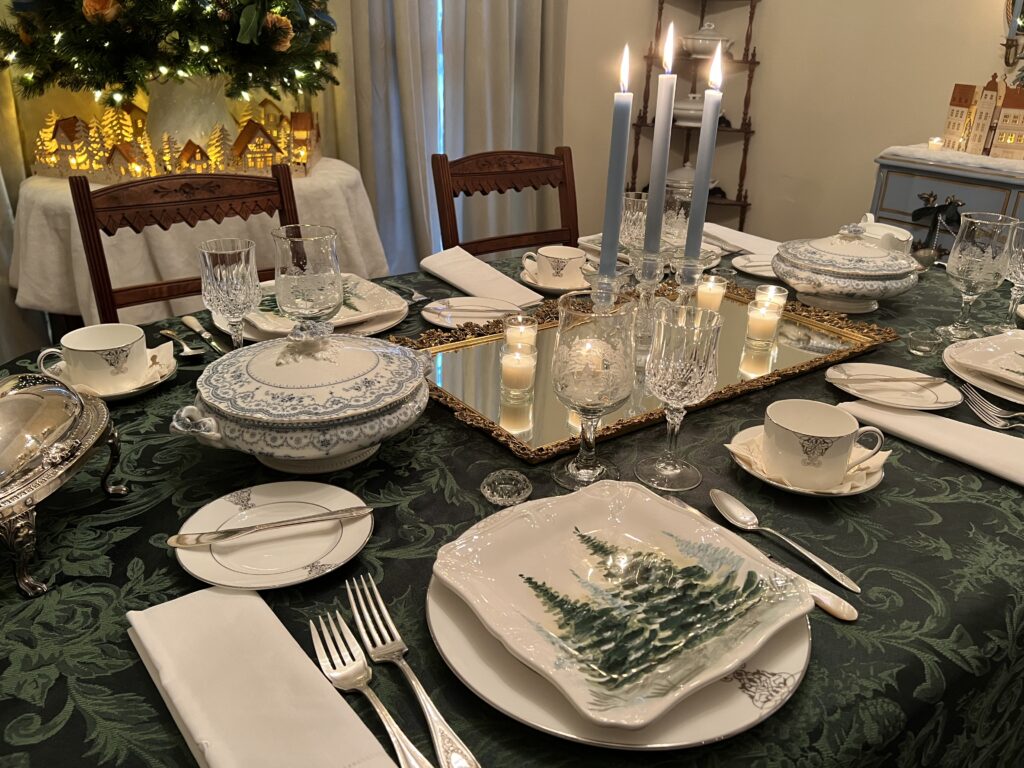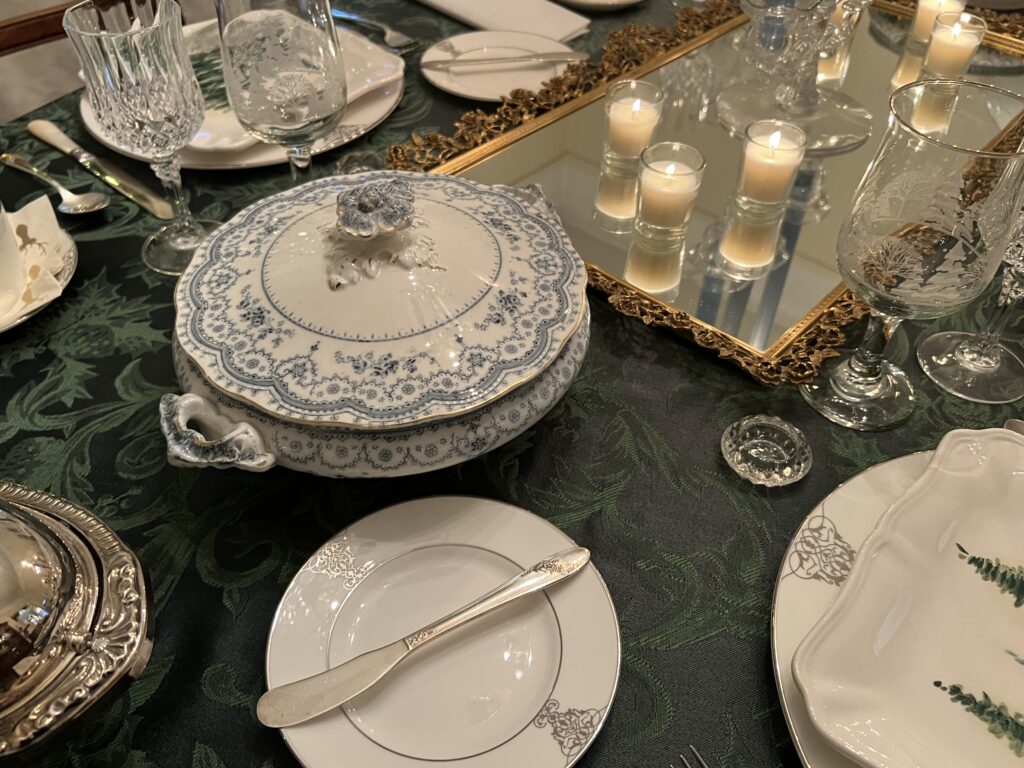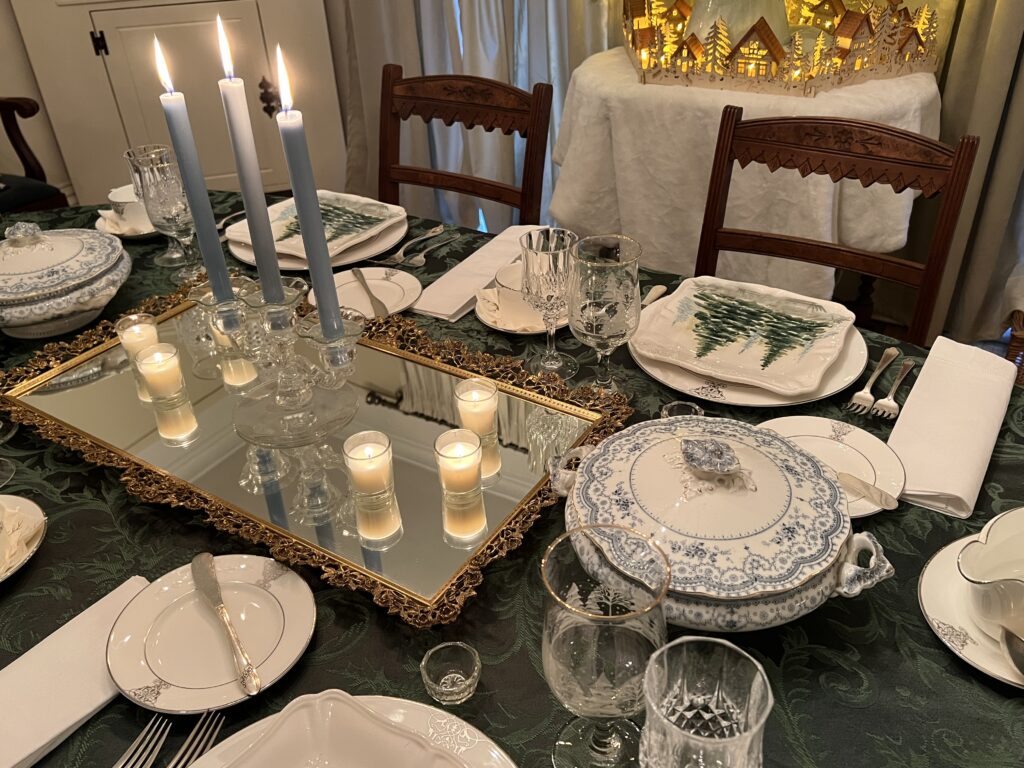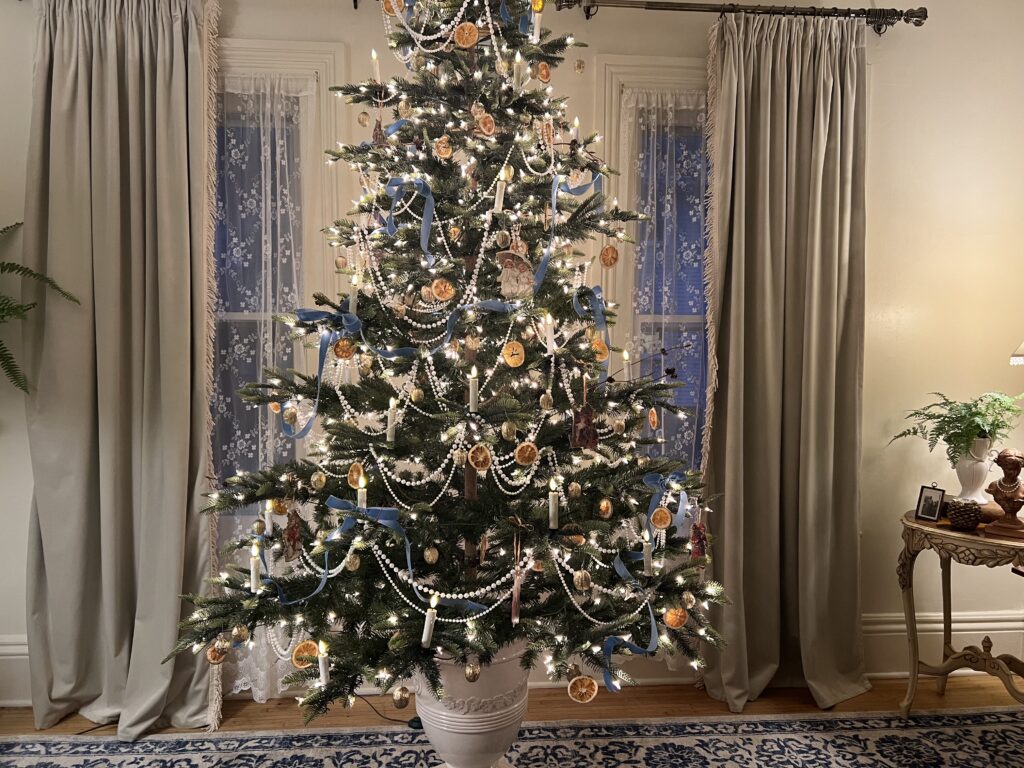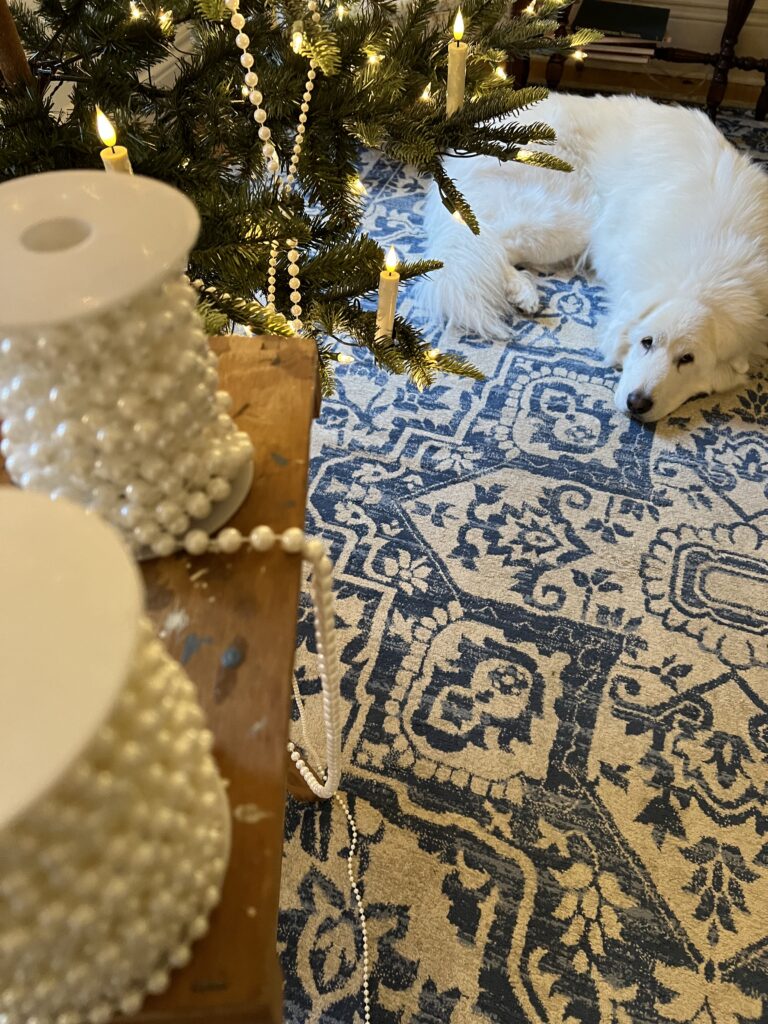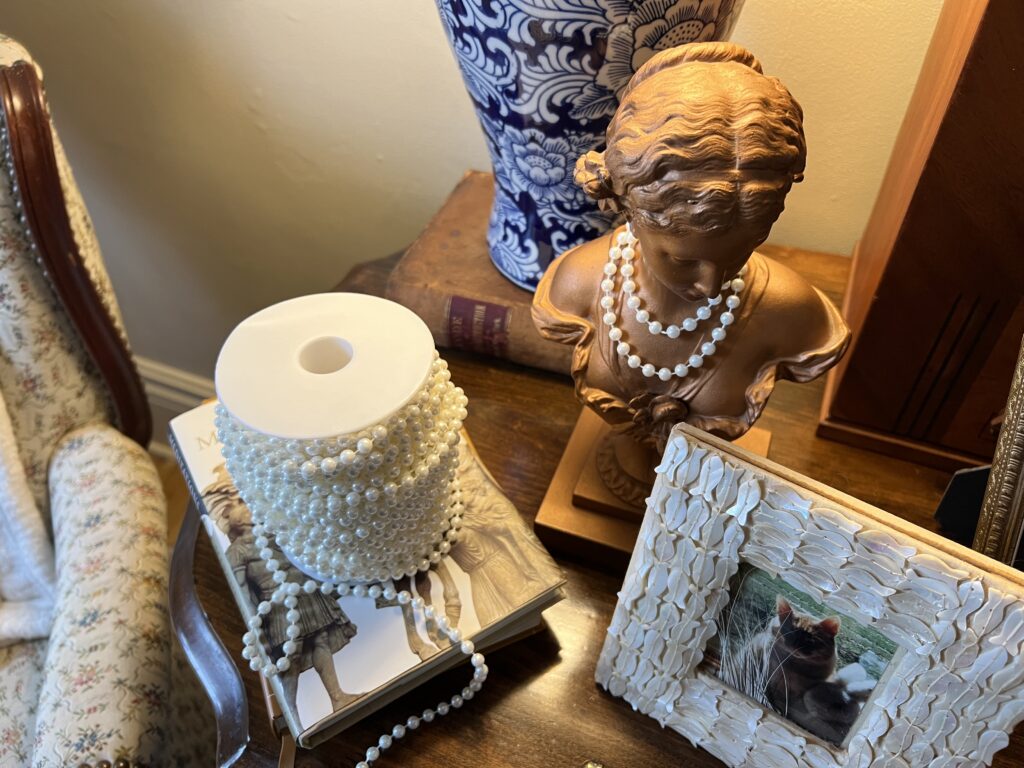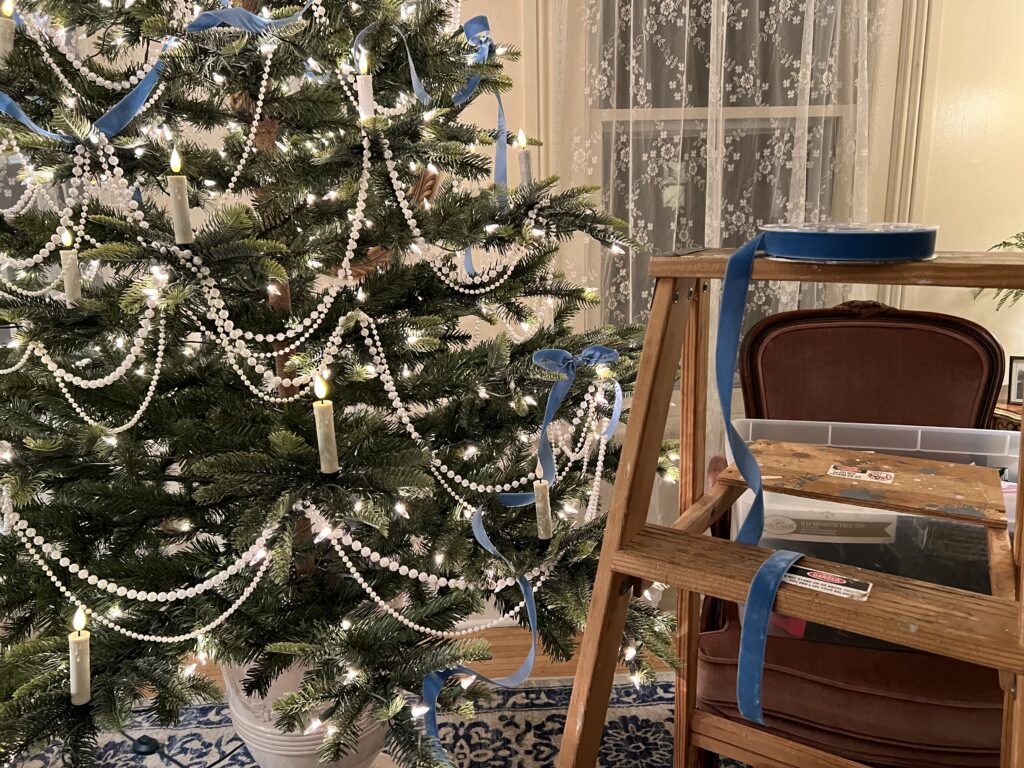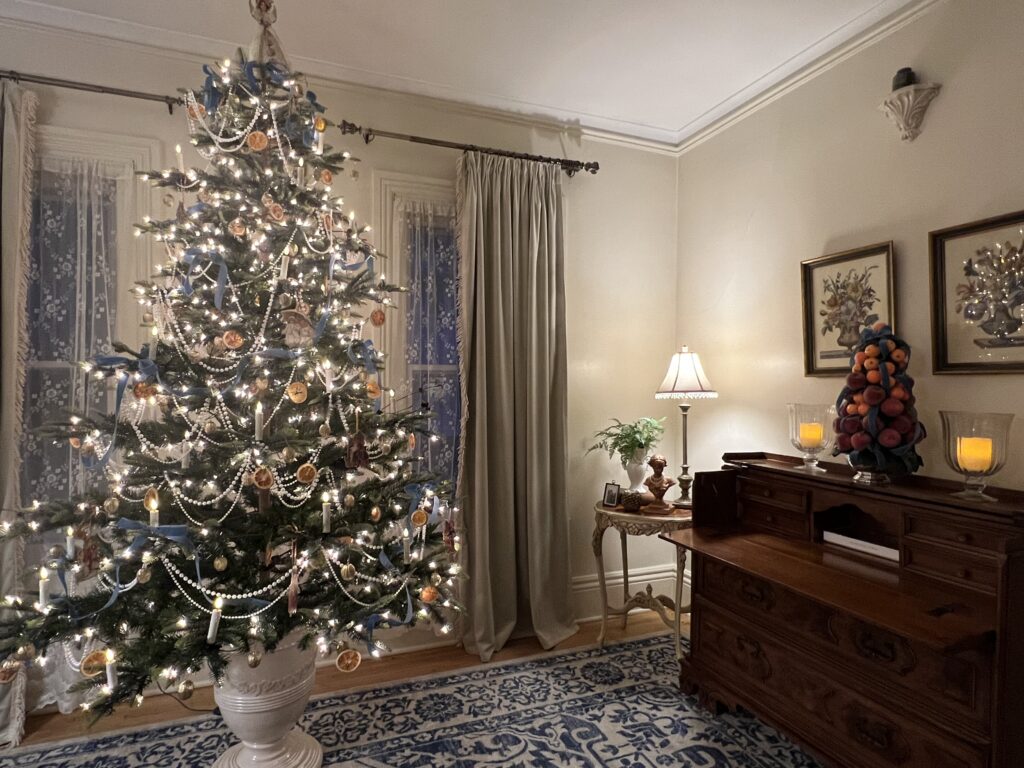French Country style effortlessly blends rustic charm with timeless elegance, making it one of the most accessible and adaptable design styles for any home.
Wondering how to get a little bit of that French country flavor in your own home? Once upon a time I had the same question! Today, I’ll share the core tenets of French Country décor and provide a framework for this timeless style; whether you’re a seasoned decorator or new to design, this guide will help you understand and incorporate French Country charm into your space.
What Is French Country Décor?
At its core, French Country décor is about creating an inviting, yet effortlessly stylish space. Combining elements like ornate gilding, detailed carvings, and crystal chandeliers with soft natural linens, rustic beams, and stone floors gives this style a uniquely relaxed yet elegant feel.
To me, the French country aesthetic blends the refined charm of Loire Valley châteaux with the practicality of humble French farmhouses. Unlike the grandeur of Parisian estates like Versailles or Château de Fontainebleau, these country retreats offered a relaxed sophistication, where practicality and beauty intertwine for elegant yet comfortable daily living.
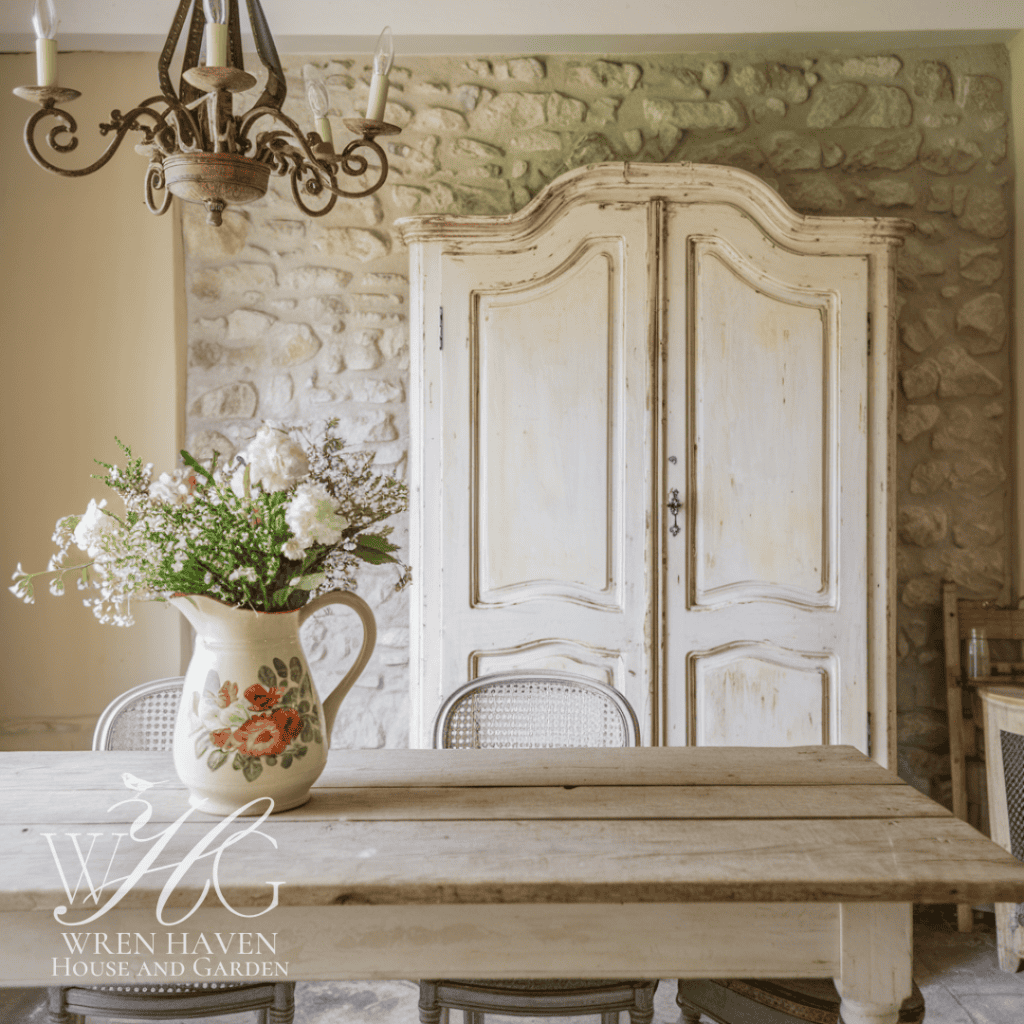

Key Characteristics of French Country Décor
- Soft, Neutral Color Palettes: Think creams, whites, soft blues, muted greens, and earthy tones. Accent colors, like deep reds, soft pinks, or warm yellows, are used in textiles or accent pieces.
- Natural Materials: Stone, wood, wrought iron, and linen are staples of this style.
- Aged and Weathered Finishes: Furniture often features distressed or antique finishes, lending a lived-in and timeless feel. It may also be painted or even gilded.
- Curved Lines: Unlike modern or minimalist styles, French Country décor emphasizes curves in furniture, such as cabriole legs, ornate carvings, and scalloped edges on window treatments and linens.
- Floral and Toile Patterns: These iconic prints are commonly used in upholstery, curtains, and bedding to add a touch of whimsy and charm.
- Borrowed Elements: Like its English cousin, French country decor borrows elements from other styles, giving it a gathered, collected, old-world feel. But these borrowed elements are accents, not foundational.
- Functional Elegance: Every piece, from a simple wooden dining table to an intricately carved mirror, strikes a balance between beauty and utility.
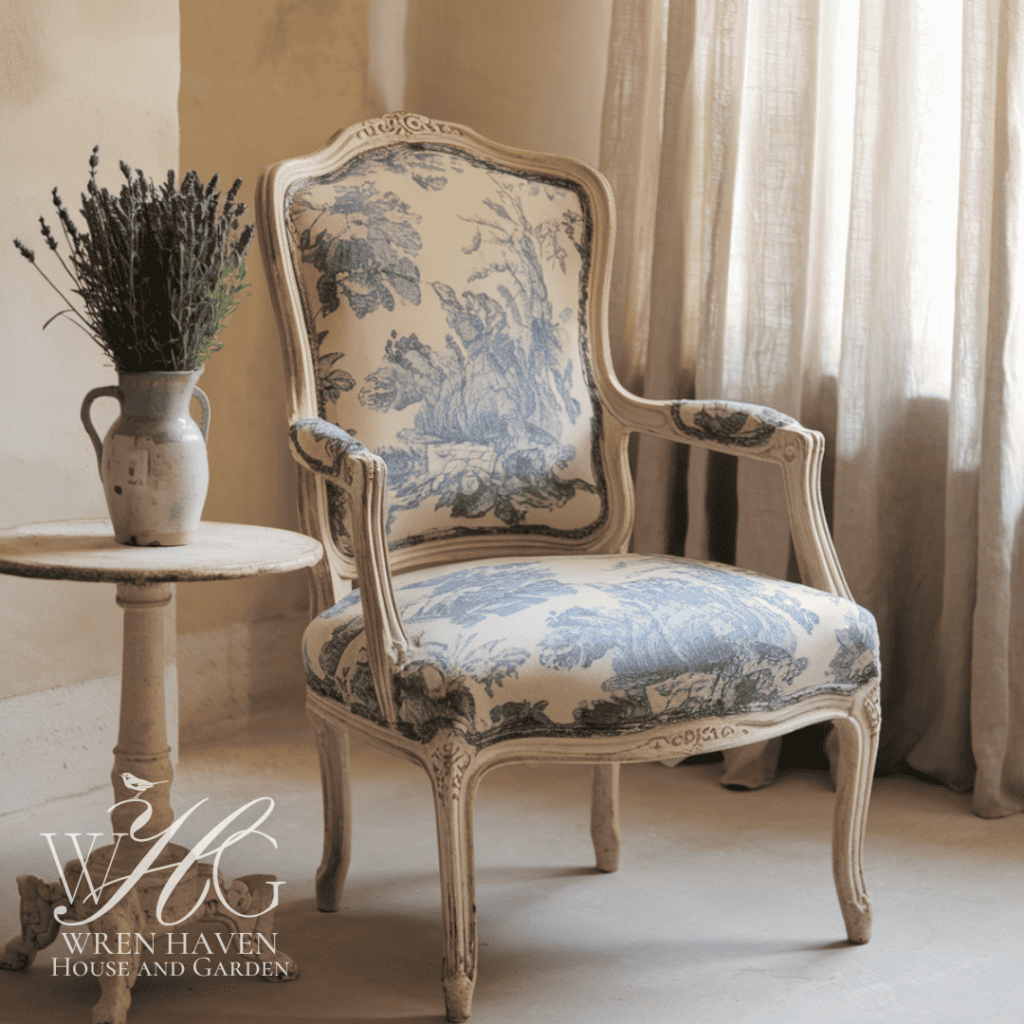

How Does French Country Differ from Similar Styles?
Understanding what sets French Country apart will clarify its unique appeal and help you understand how to implement it. Here’s a very brief explanation of a few similar popular styles.
French Country vs. English Country
While both styles embrace coziness and traditional charm, French Country leans more towards elegance, with lighter color palettes, refined furniture details, and a stronger focus on symmetry. English Country often feels heavier, with darker woods and busier patterns on walls and linens.
French Country vs. Parisian Chic
Parisian Chic is urban and minimalist, favoring sleek, modern lines and dramatic contrasts (like black and white). French Country, by contrast, is softer, more rustic, and rooted in the countryside.
French Country vs. Rococo
Rococo is opulent and flamboyant, with extravagant use of gilding, intricate details, and luxurious fabrics. French Country is more restrained and approachable, using similar curves and ornamental touches but with a focus on practicality and comfort.
French Country vs. Farmhouse
While both styles value natural materials, Farmhouse style often feels more casual and industrial, with a focus on shiplap, reclaimed wood, and metal fixtures. French Country elevates these elements with refined craftsmanship, antique-inspired details, and softer finishes.
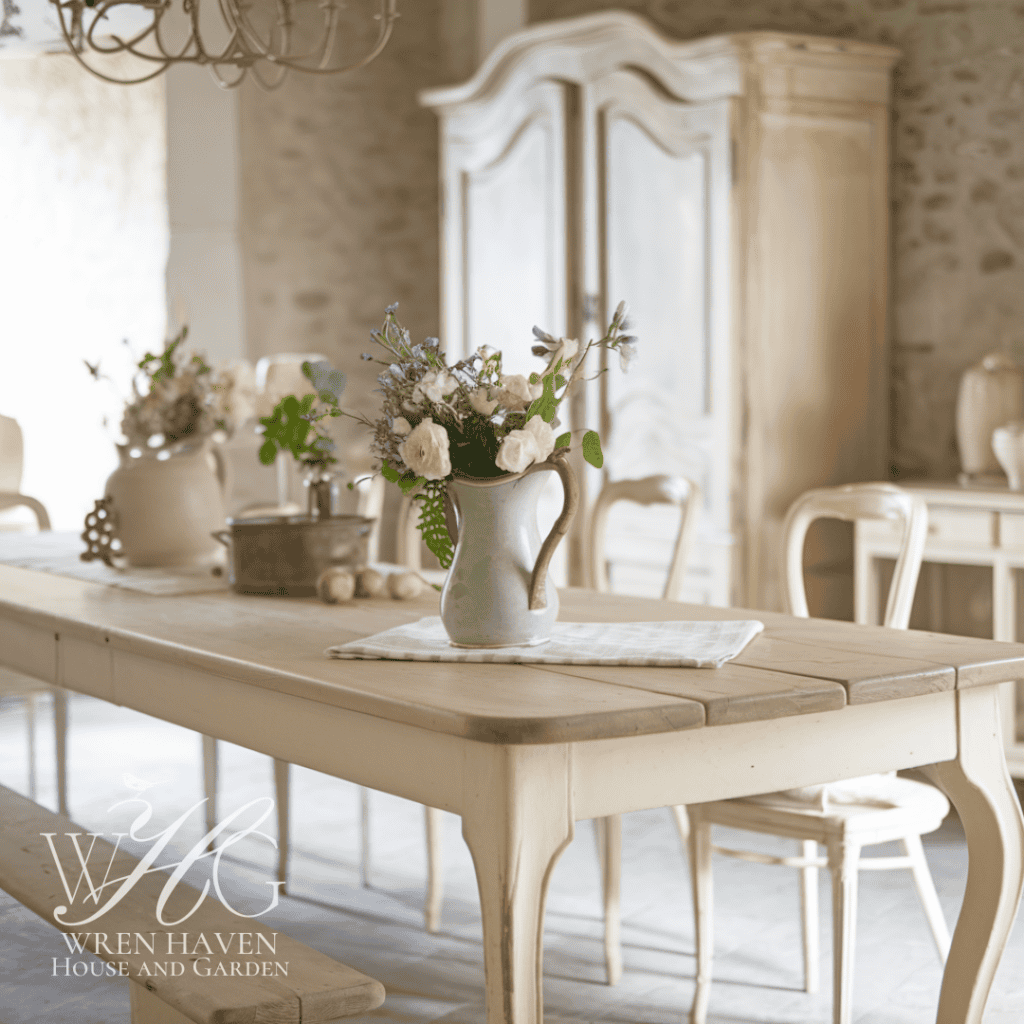

What Makes French Country Décor So Accessible
One of the greatest appeals of French Country décor is its versatility. It suits homes of all sizes and works well with both new and vintage pieces. Here are a few reasons why it’s an easy style to adopt:
- Mix-and-Match Friendly: French Country thrives on a collected-over-time look, so you can blend inherited furniture, thrifted finds, and modern accents.
- Approachable DIY Projects: Distressing furniture, sewing toile curtains, or creating rustic seasonal centerpieces for your table are easy ways to easily add French country charm.
- Timeless Appeal: The intentional, collected mix of rustic and refined ensures this style will never feel outdated! Which leads us to our final pint…
- Budget-Friendly: This style is so easy to thrift for! Estate sales, flea markets, and antique shops are treasure troves for French Country décor pieces!
How to Implement French Country Décor in Your Home
Ready to bring French Country charm into your space? Here’s a step-by-step guide to help you get started.
1. Start with a Neutral Foundation
Paint walls in soft, neutral shades like cream, beige, or pale gray. These colors create a serene backdrop that complements the style’s natural materials and patterned accents.
2. Choose a Mix of Rustic and Refined Furniture
Look for pieces with curved lines, carved details, and lightly distressed finishes. A farmhouse table, a vintage armoire, or an upholstered bergère chair are classic options. It’s ok to mix finishes, combining natural colored wood with some painted and even some gilded pieces. This style is all about blending!
3. Incorporate Natural Materials
- Use weathered wood for tables, shelves, or beams. Resist the urge to paint everything, and leave a few things untouched!
- Add a stone floor or deep farmhouse sink in your kitchen for a touch of Provence.
- Hang a beautiful chandelier in a bedroom, use ornate sconces to flank a rustic mirror
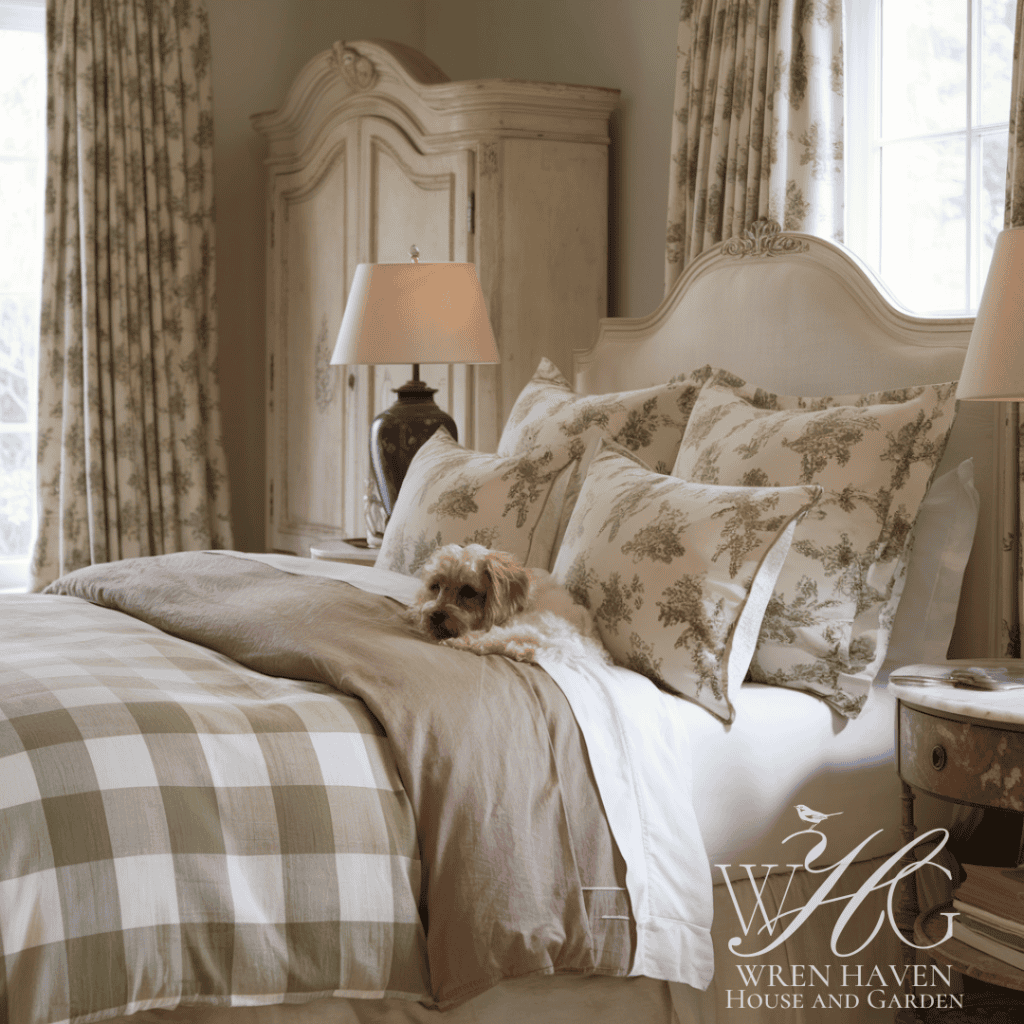
4. Layer Textiles
Soft, cozy fabrics are essential in French Country décor. Incorporate:
- Linen or cotton curtains.
- Toile or floral-patterned cushions.
- Textured throws in neutral colors.
5. Accessorize Thoughtfully
French Country décor celebrates curated clutter. Add:
- Vintage pottery, like pitchers or urns.
- Woven baskets for storage.
- Gilded mirrors or antique-style clocks.
- Fresh or dried flowers in simple arrangements.
6. Embrace Imperfection
The beauty of French Country décor lies in its imperfections. A chipped vase, a worn table, or uneven stone tiles all add to the charm.

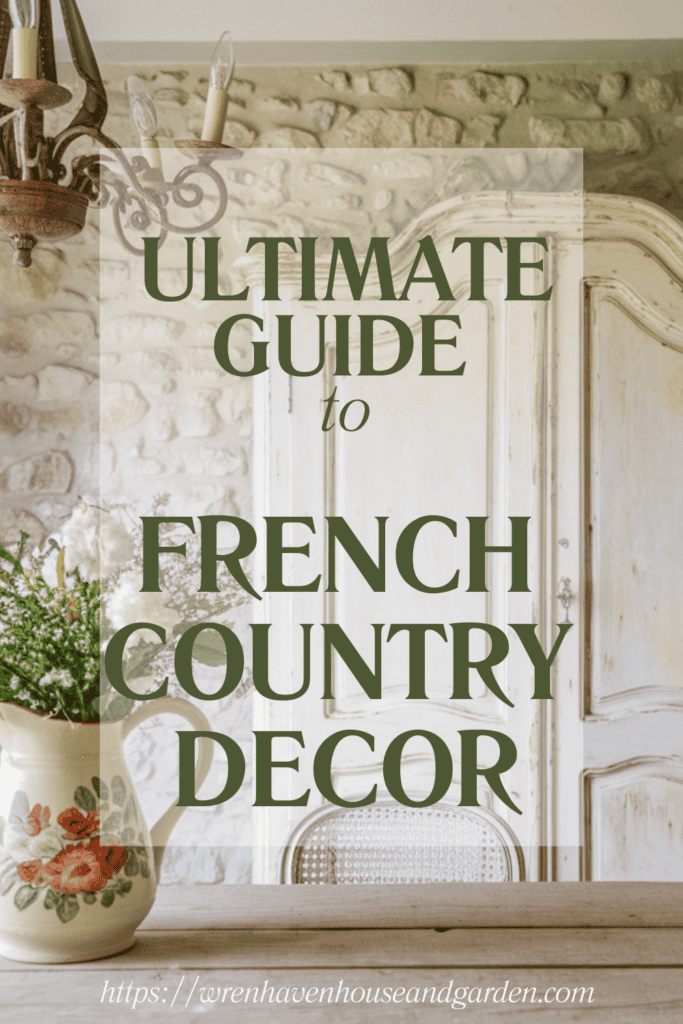
Shopping for French Country Décor
Finding French Country pieces doesn’t have to break the bank. Here are some tips for shopping smart:
Where to Shop
- Antique Shops and Flea Markets: Look for furniture, pottery, and decorative pieces with patina and character.
- Online Marketplaces: Sites like Etsy, eBay, and Facebook Marketplace often have vintage French Country items.
- Big-Box Stores: Retailers like Pottery Barn, Wayfair, and Target offer French-inspired collections at affordable prices.
What to Look For
- Furniture with carved details and curved lines.
- Decor items with a distressed or aged finish.
- Classic patterns like toile, buffalo check, or floral.
- Functional yet decorative pieces, like wicker baskets or enamelware.
Final Thoughts: Make French Country Your Own
French Country décor is more than a design style; it’s a way of life that celebrates comfort, beauty, and simplicity. Its accessible nature makes it perfect for anyone, regardless of budget or experience. By starting with a few key elements—neutral tones, rustic furniture, and thoughtful accessories—you can transform your home into a haven inspired by the French countryside.
This guide is just the beginning. Stay tuned for deeper dives into the specific components of French Country décor, from thrifting tips to mastering patterns like toile. For now, enjoy the process of creating a space that’s uniquely yours—and undeniably French.
